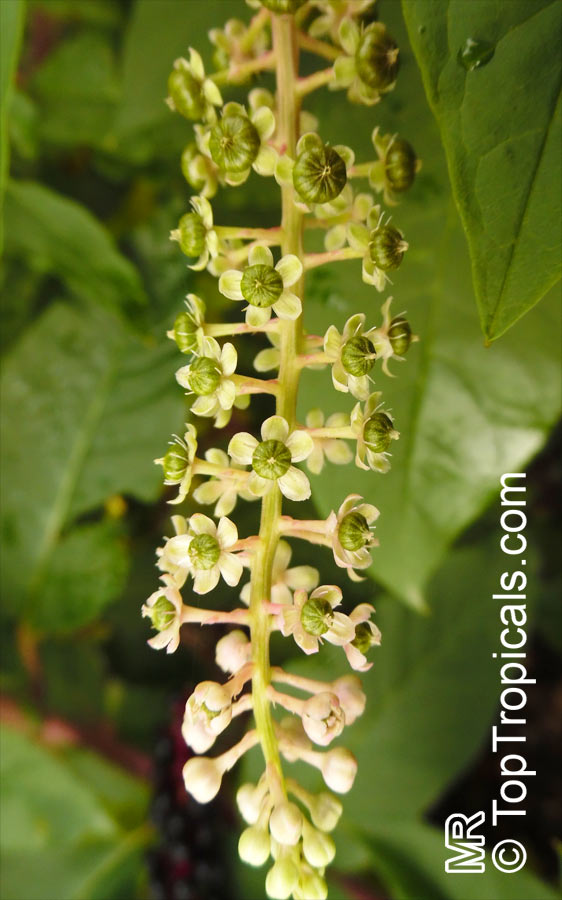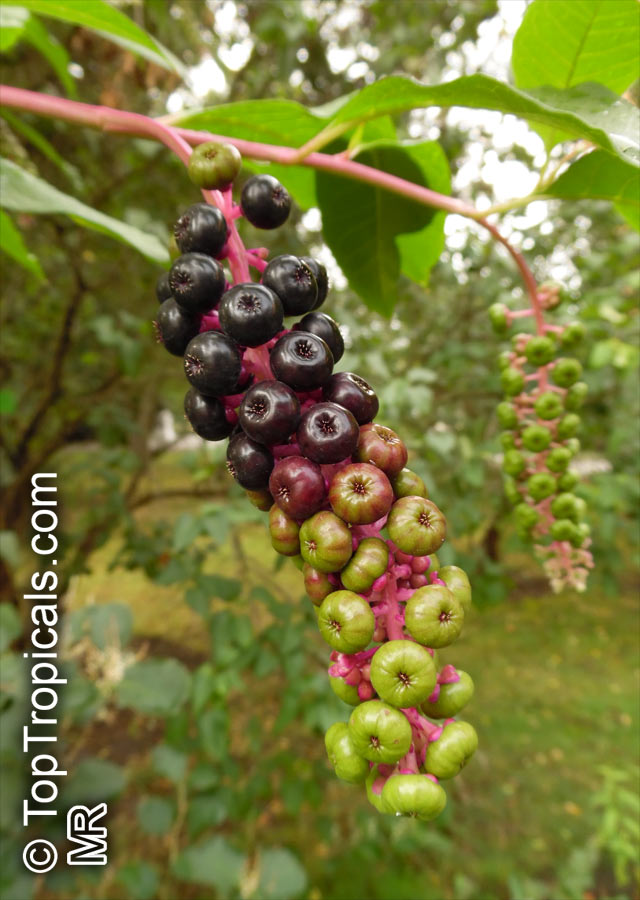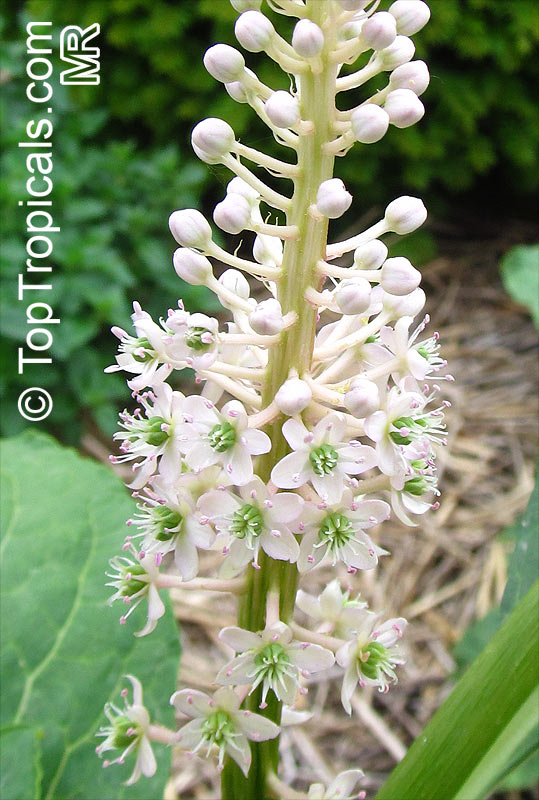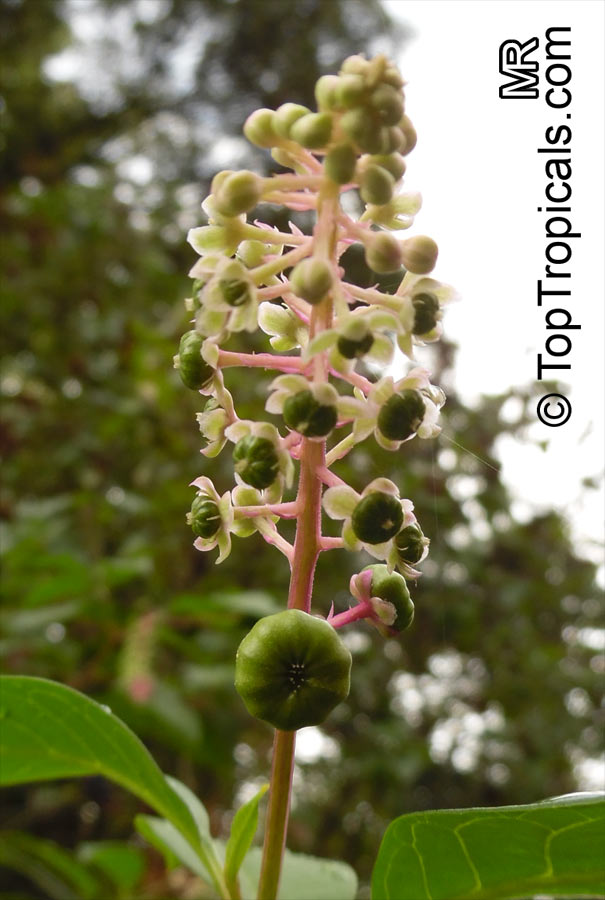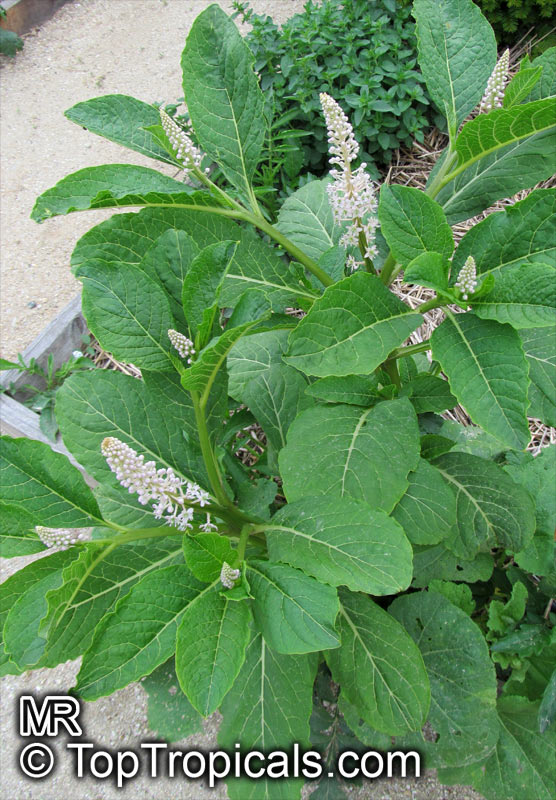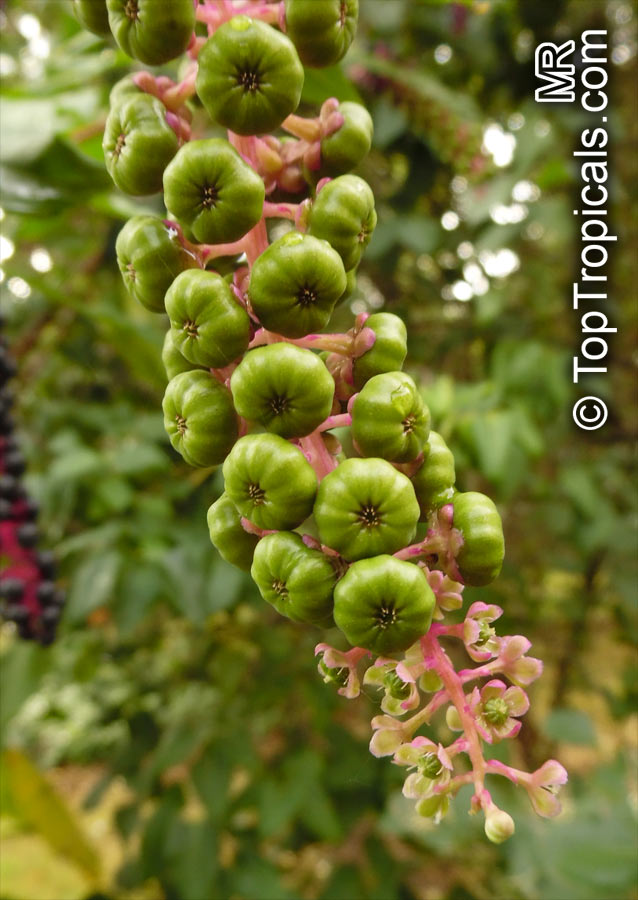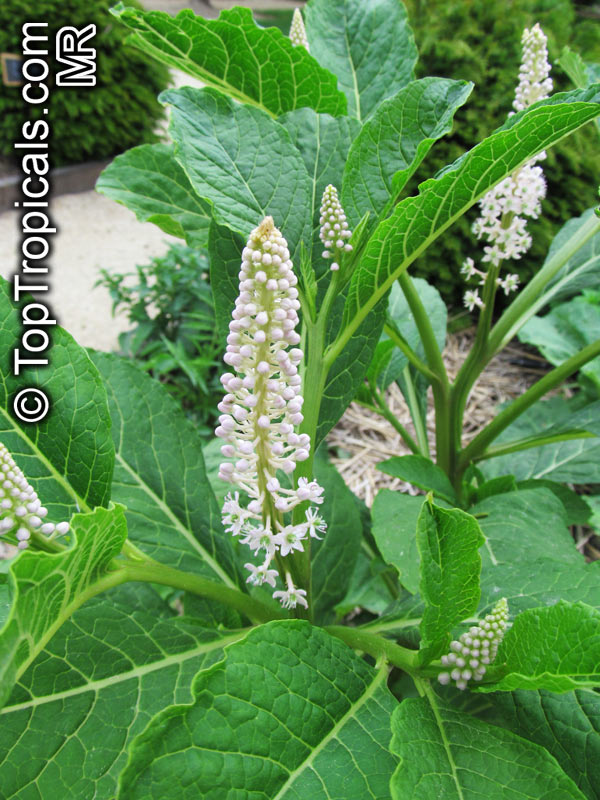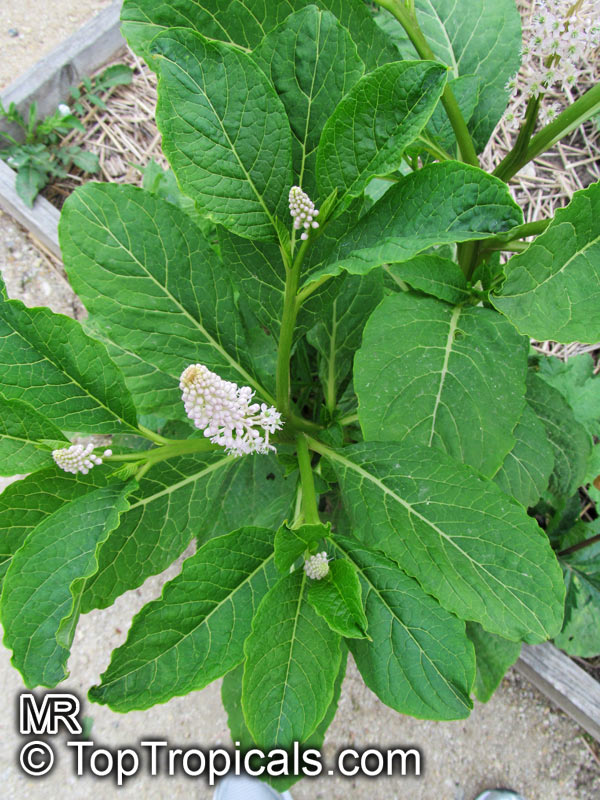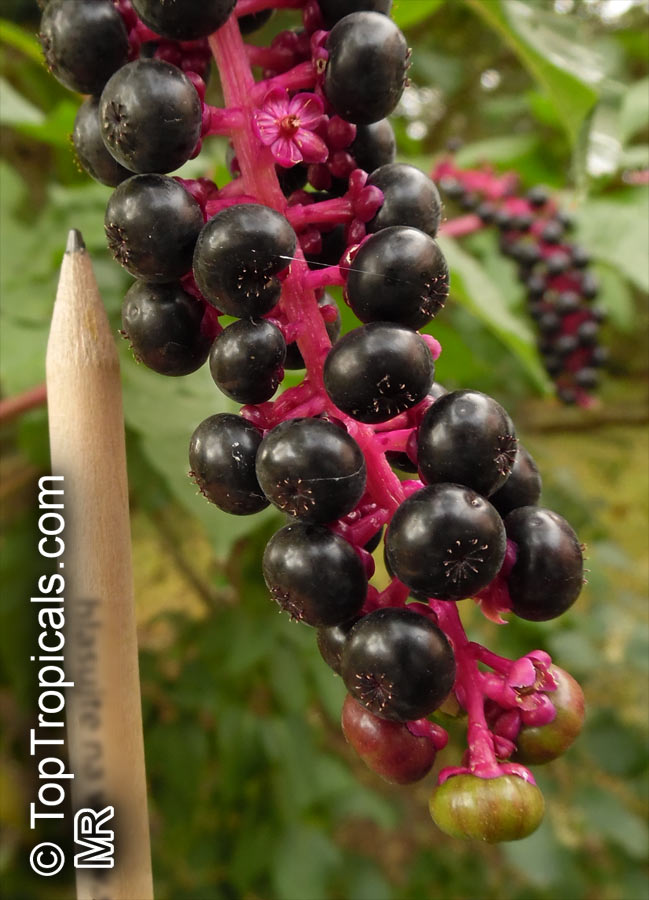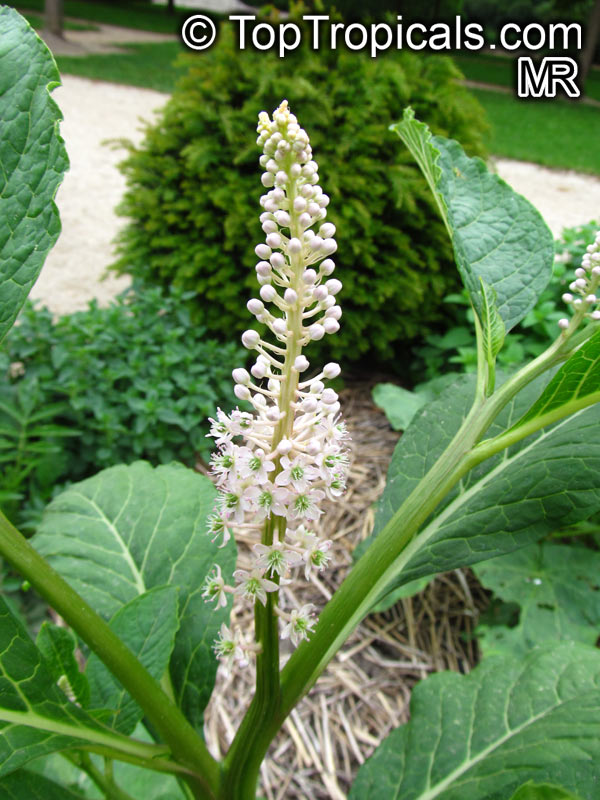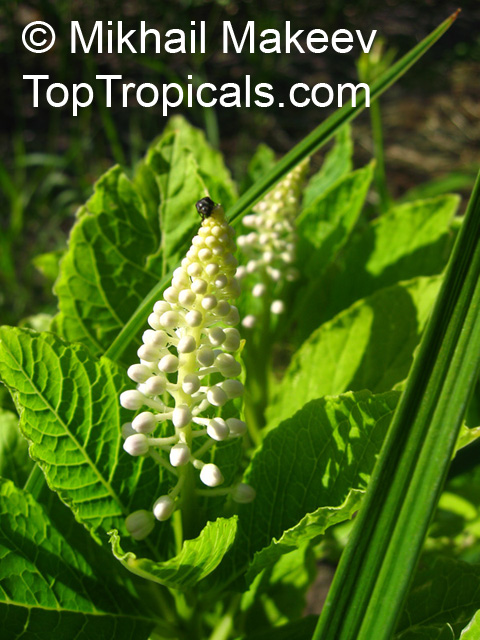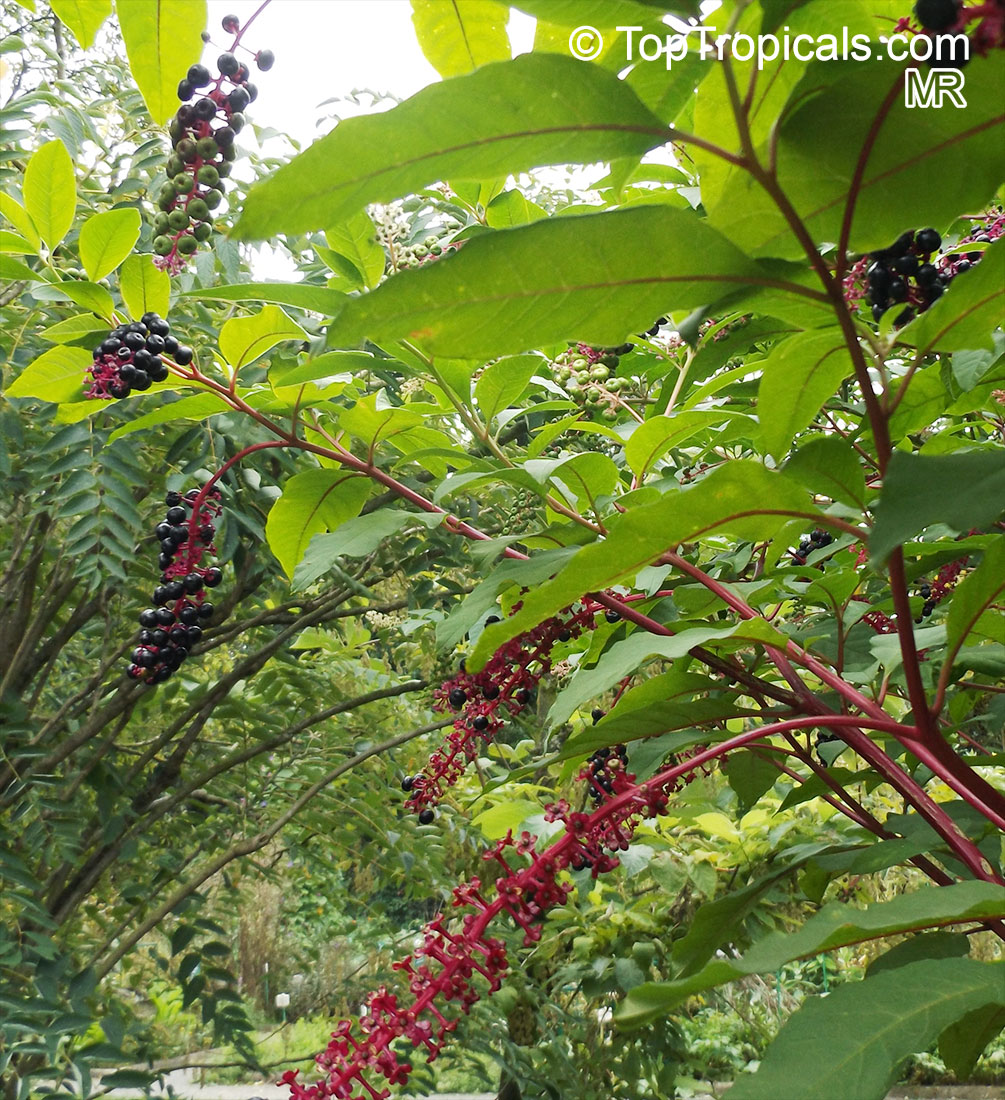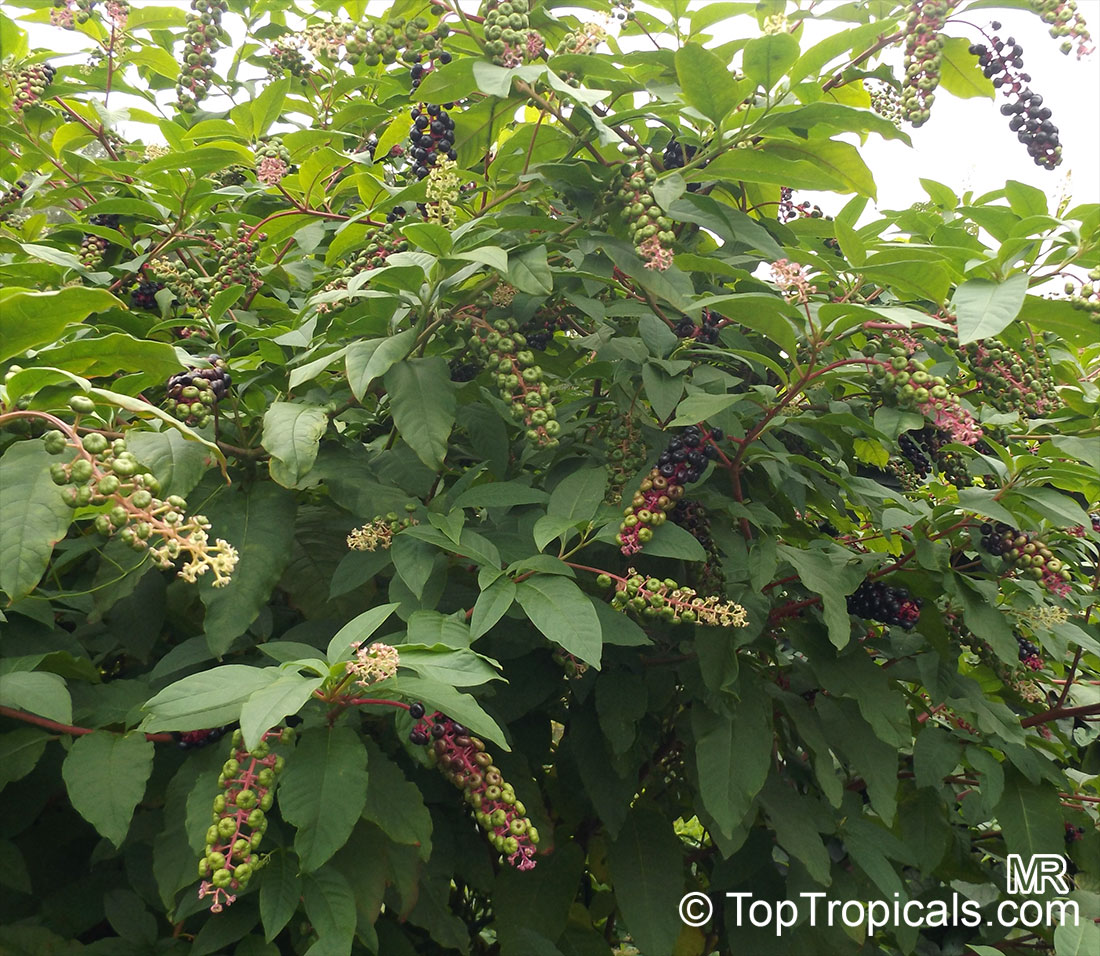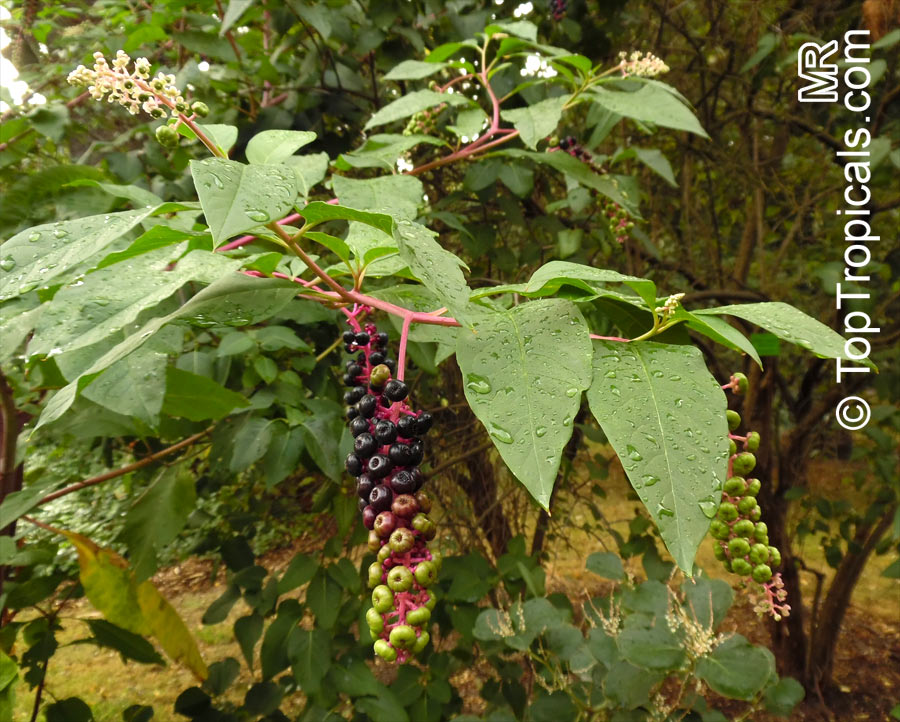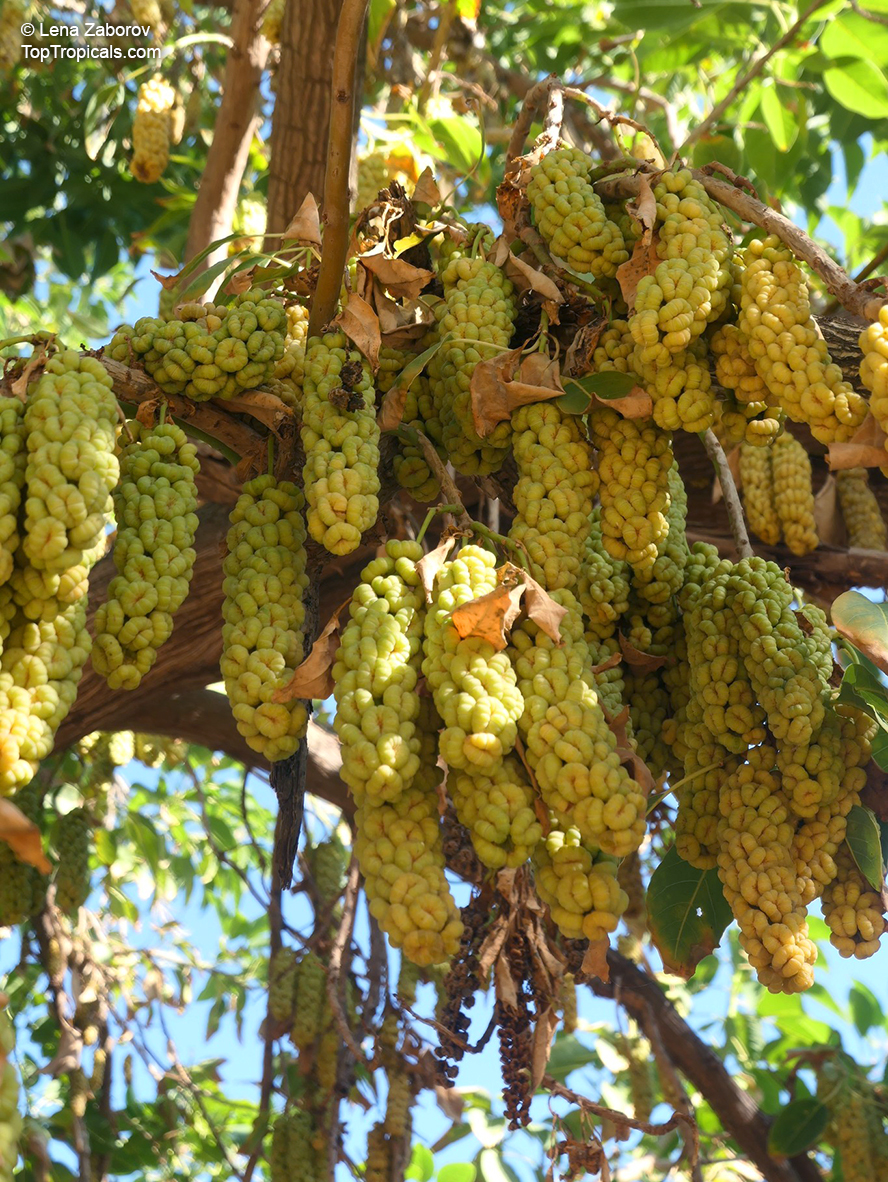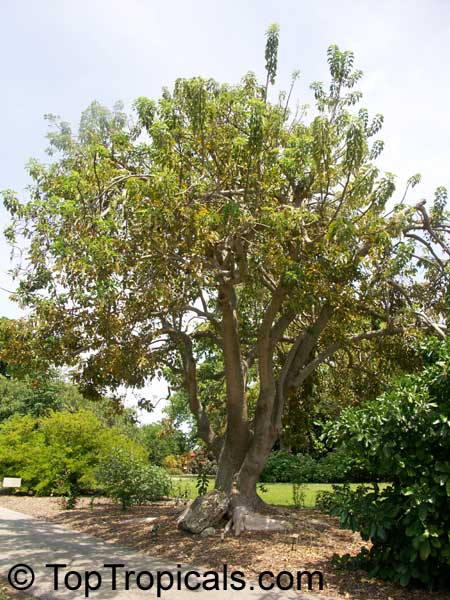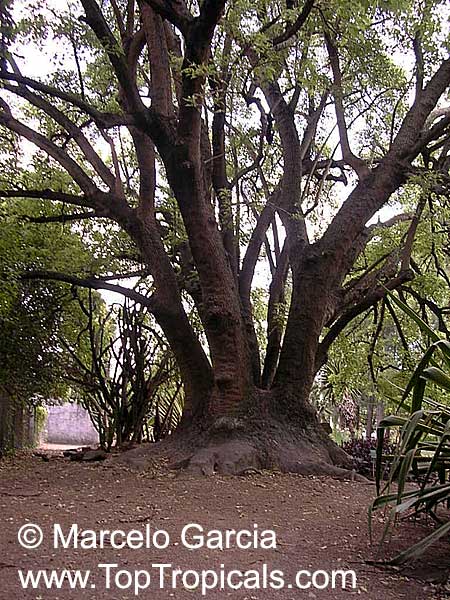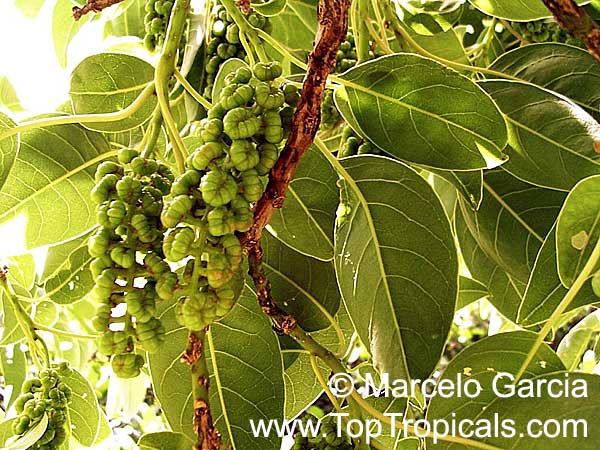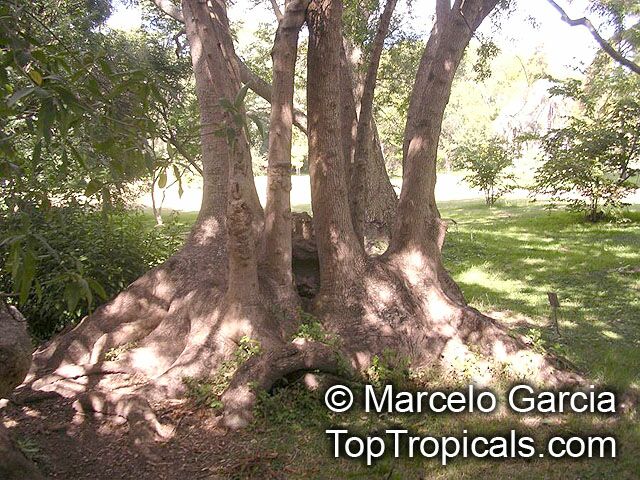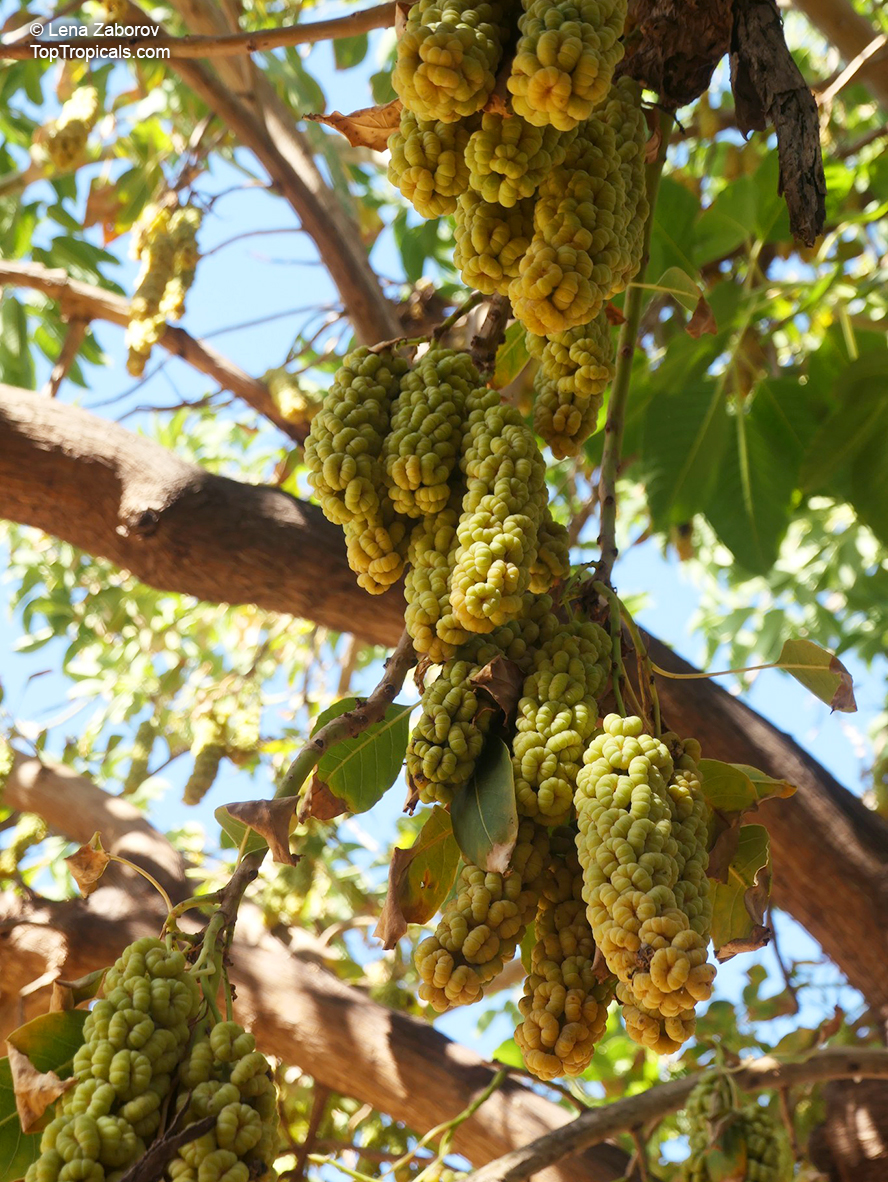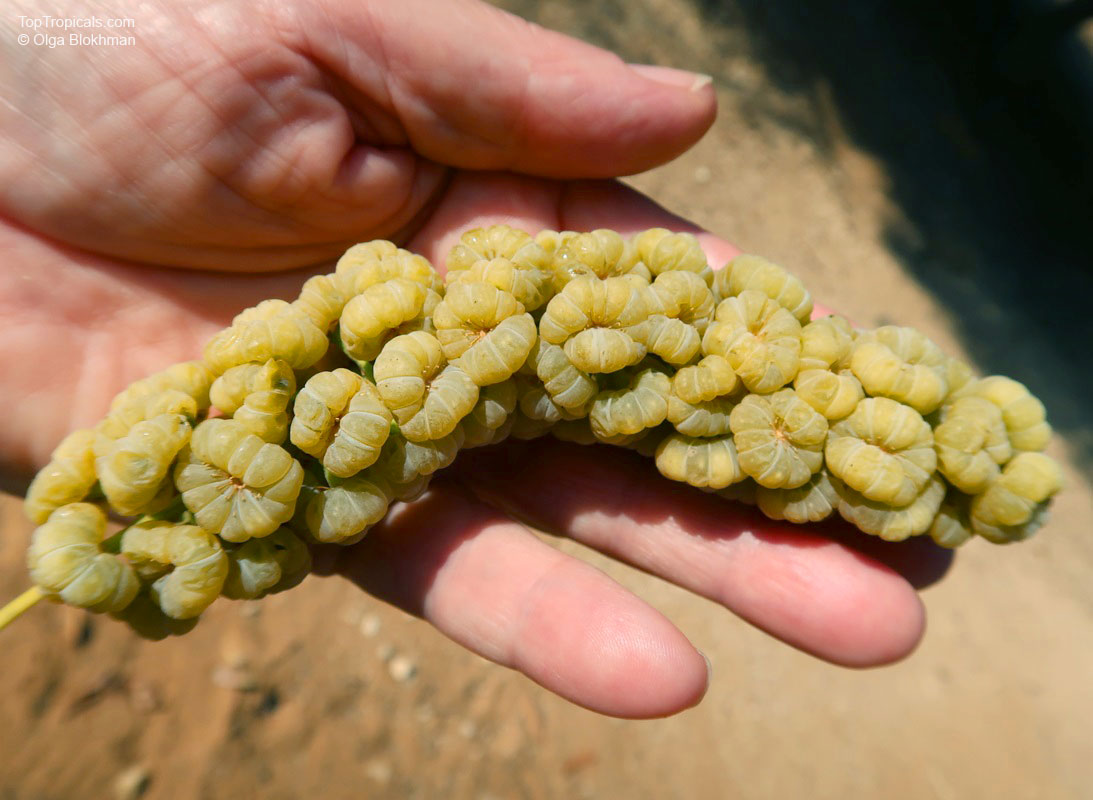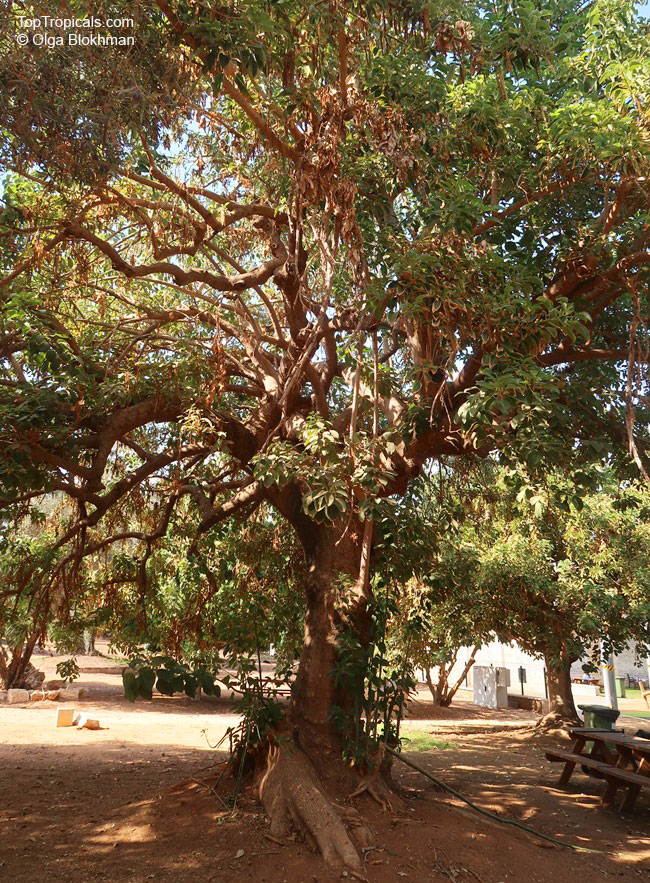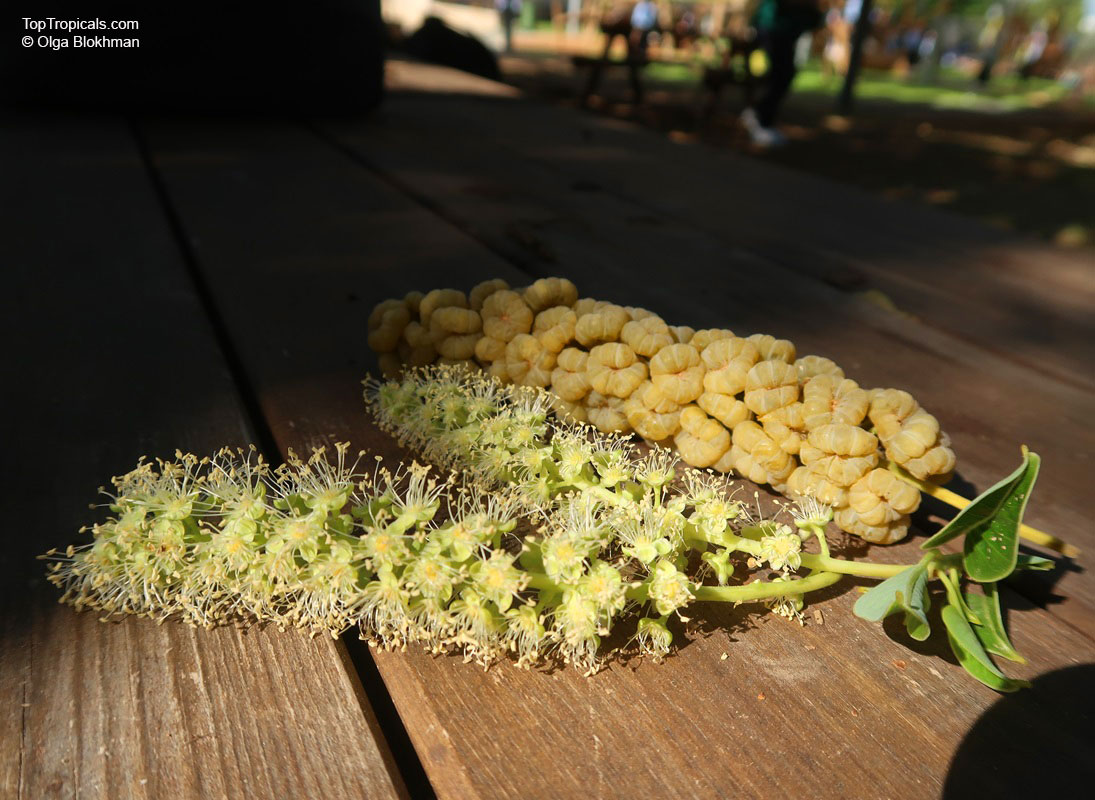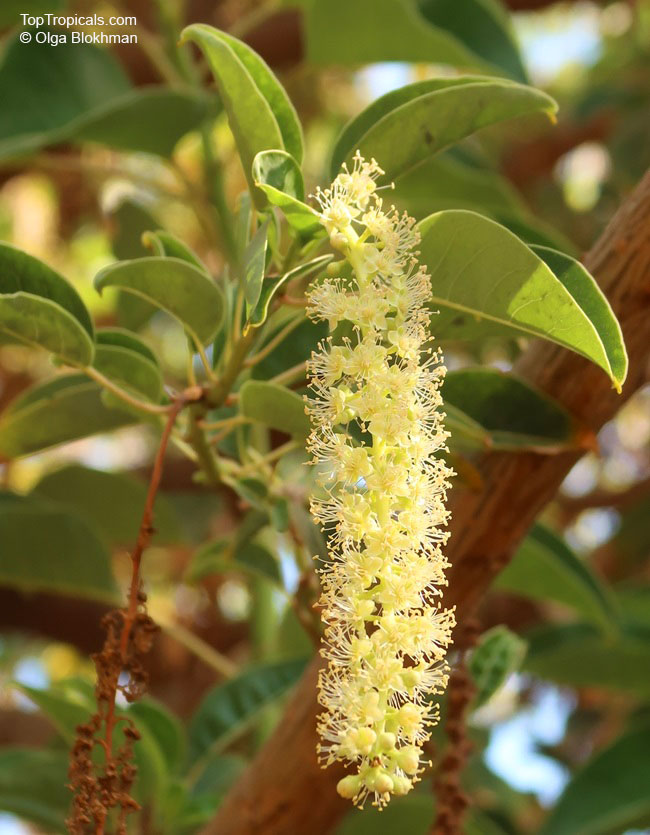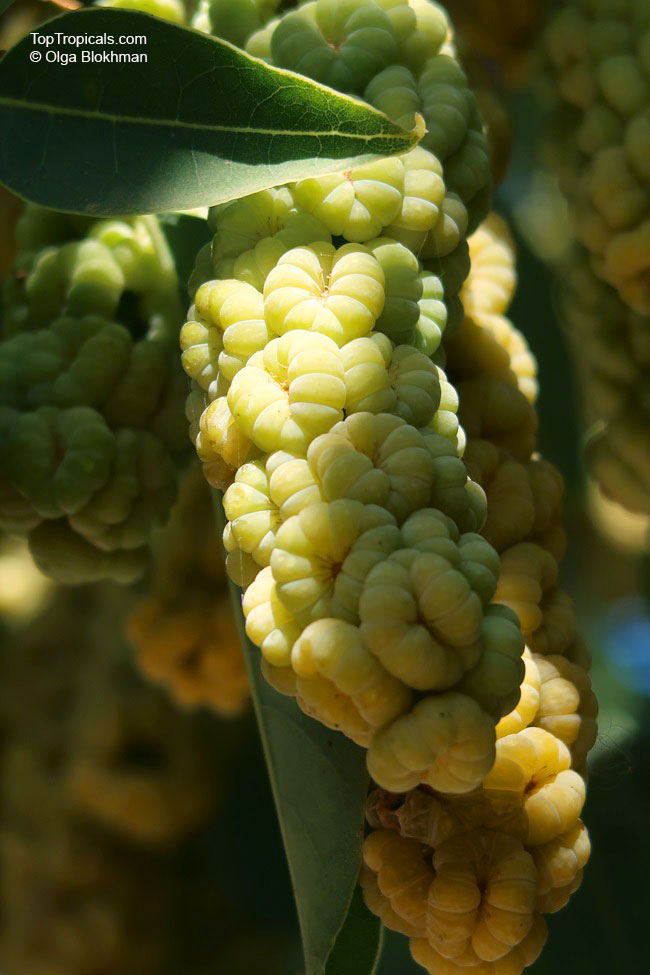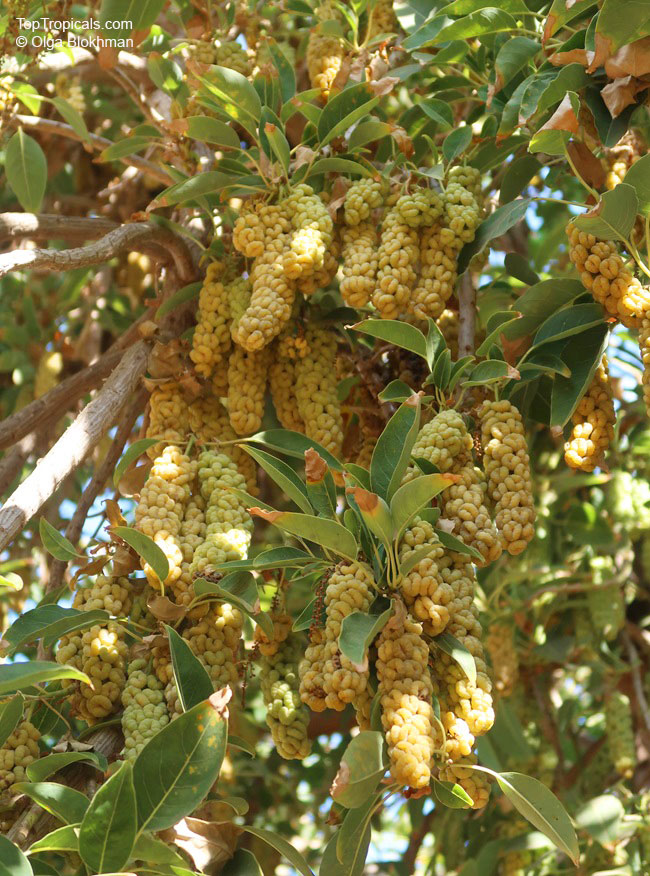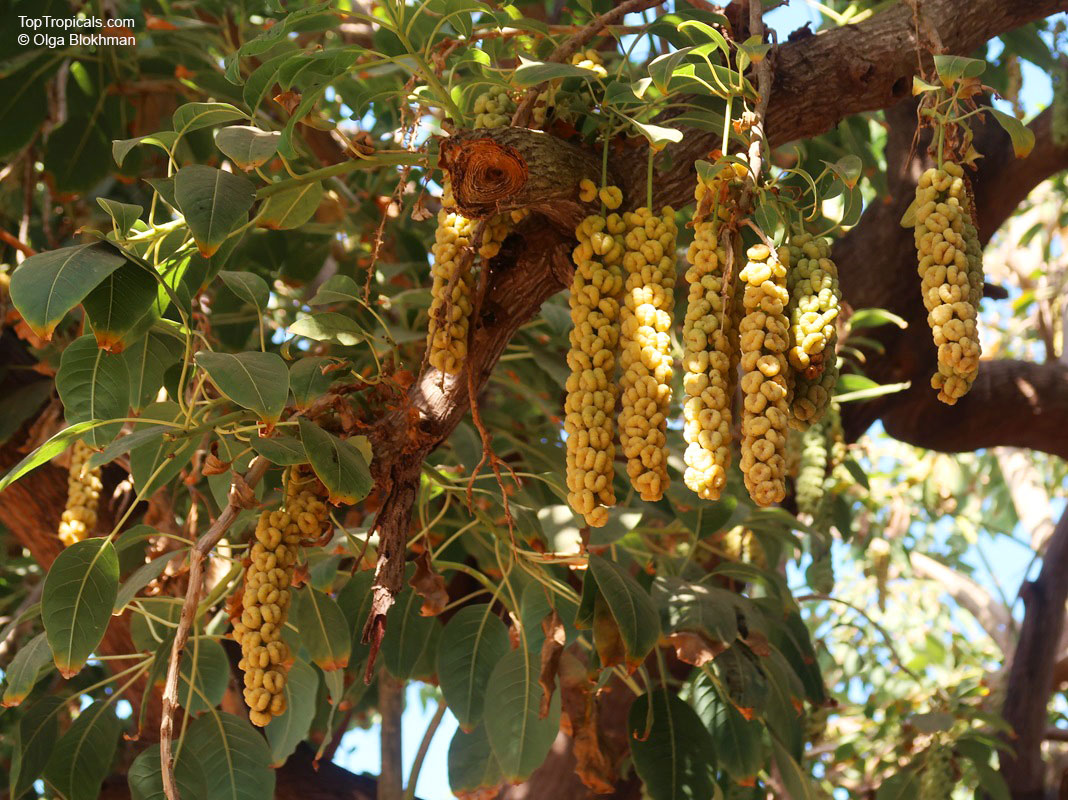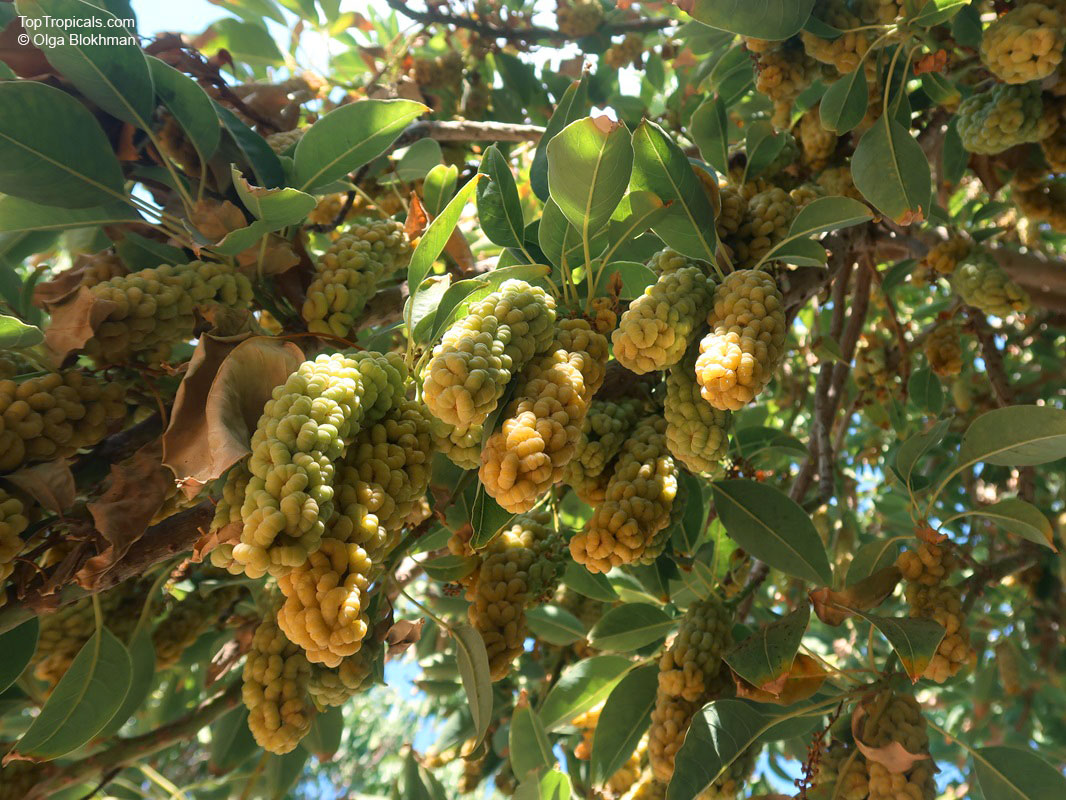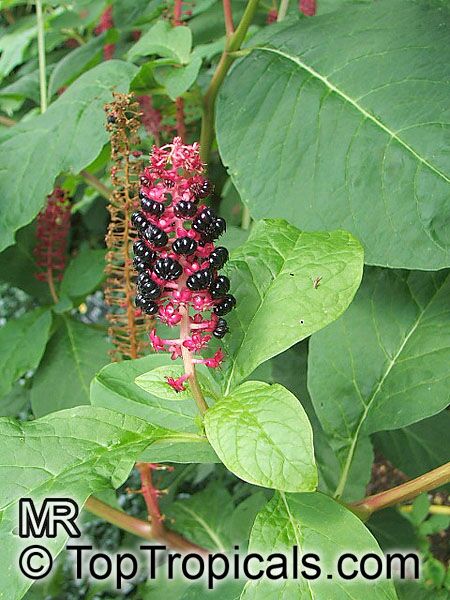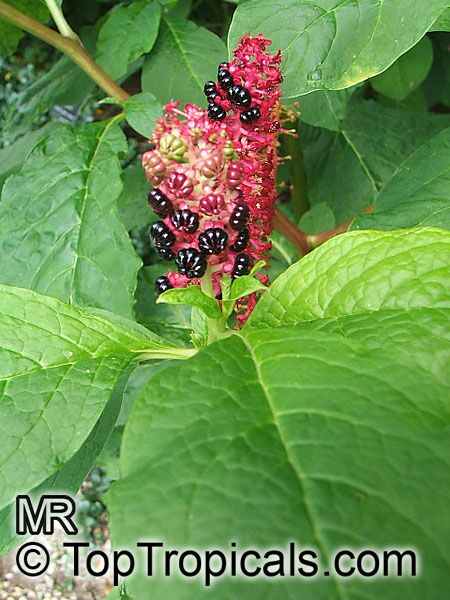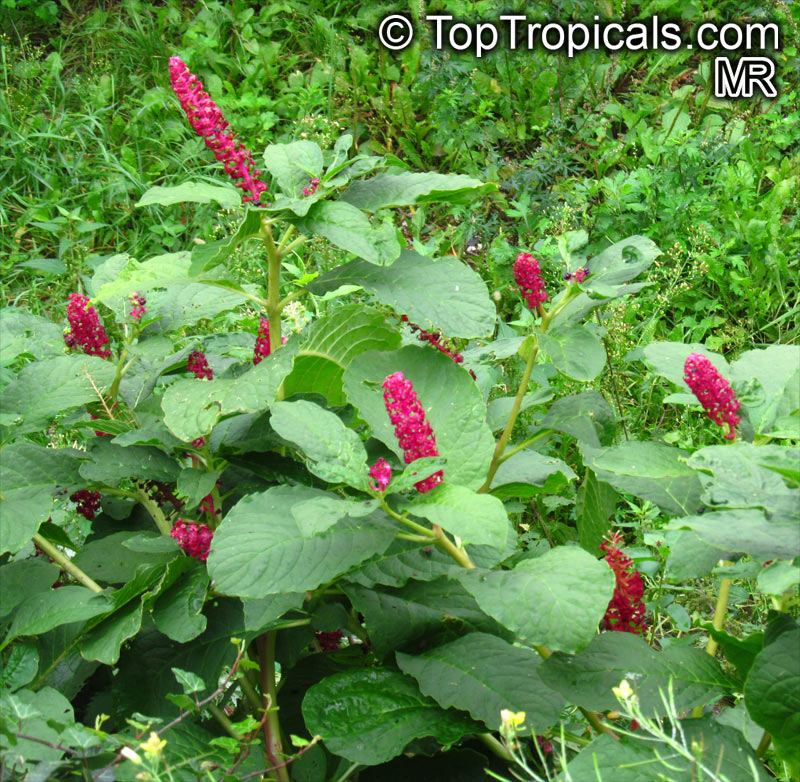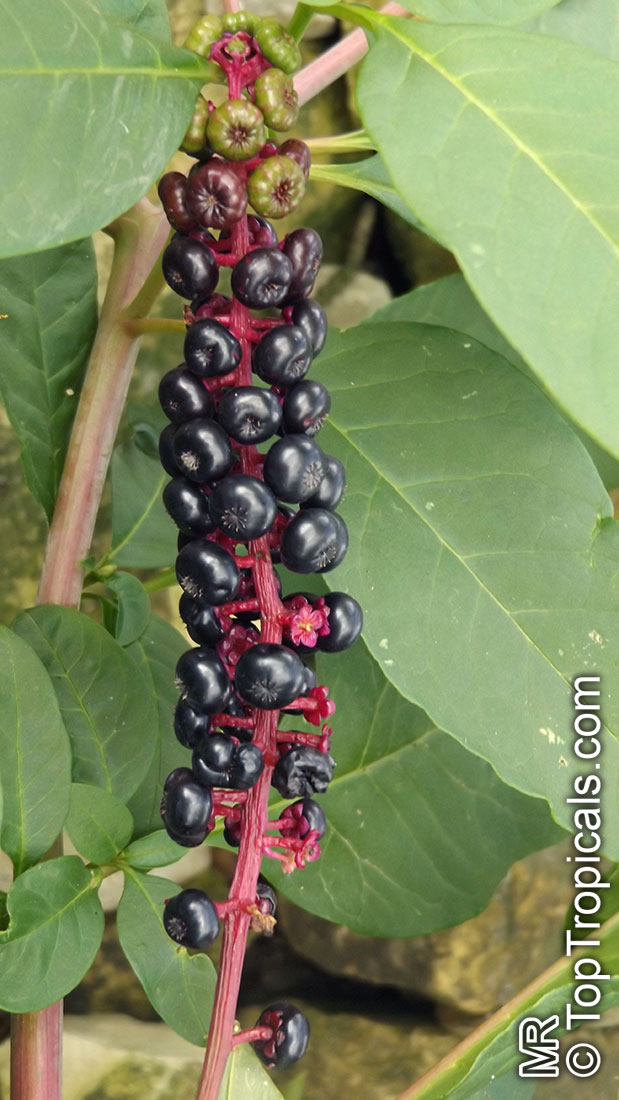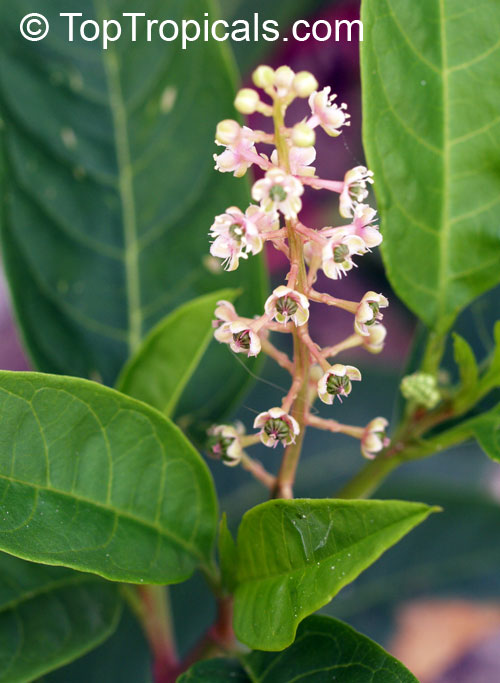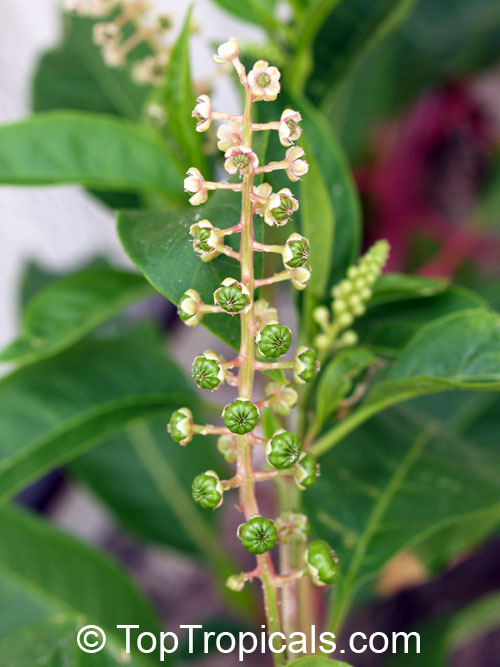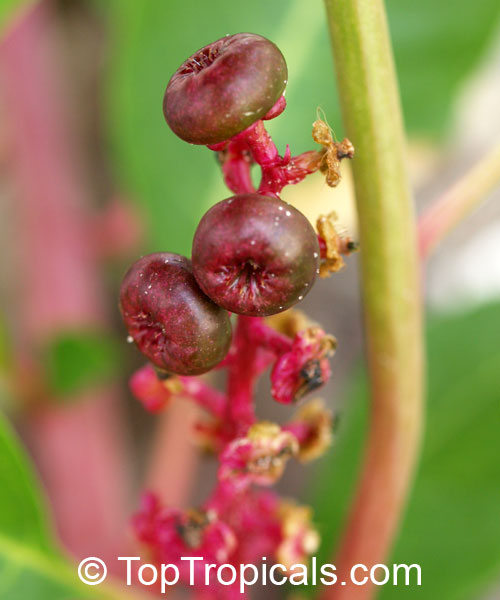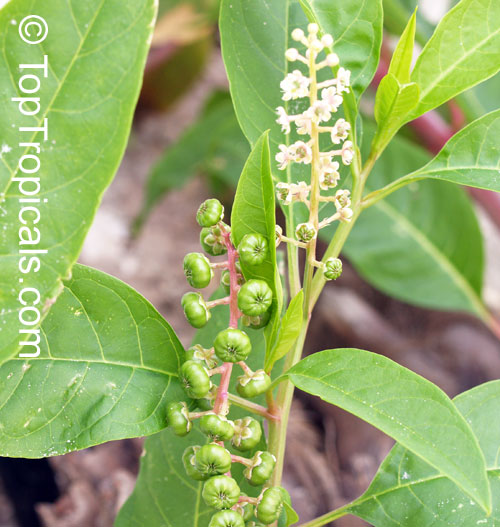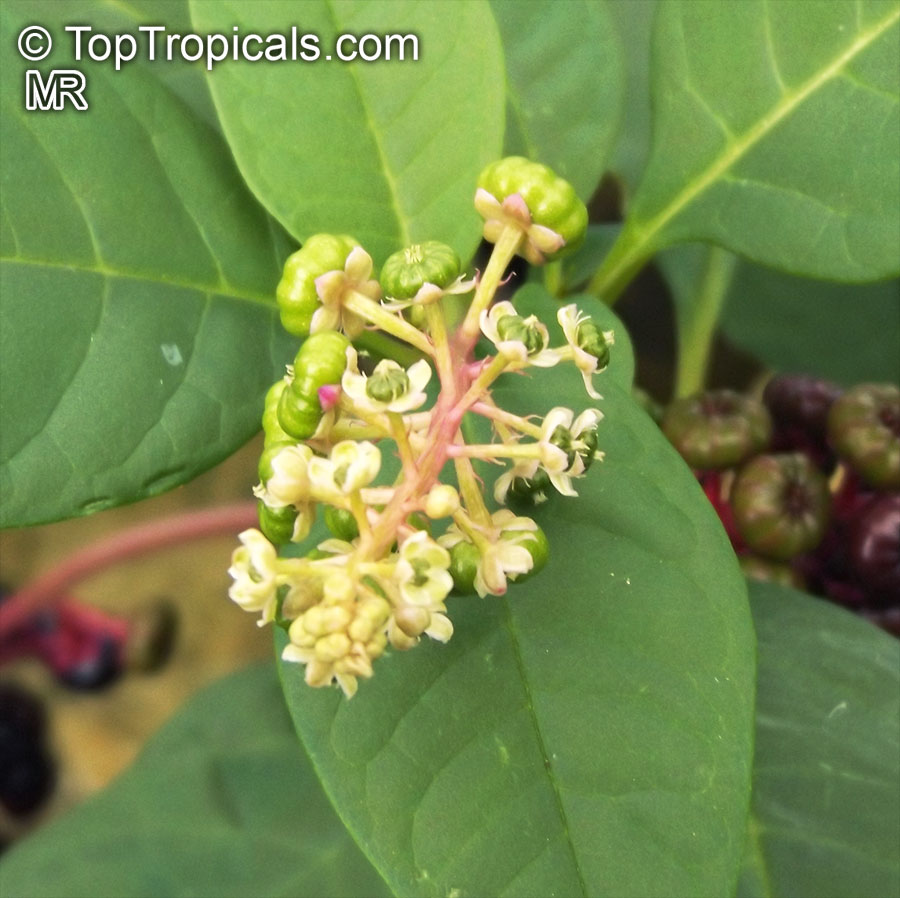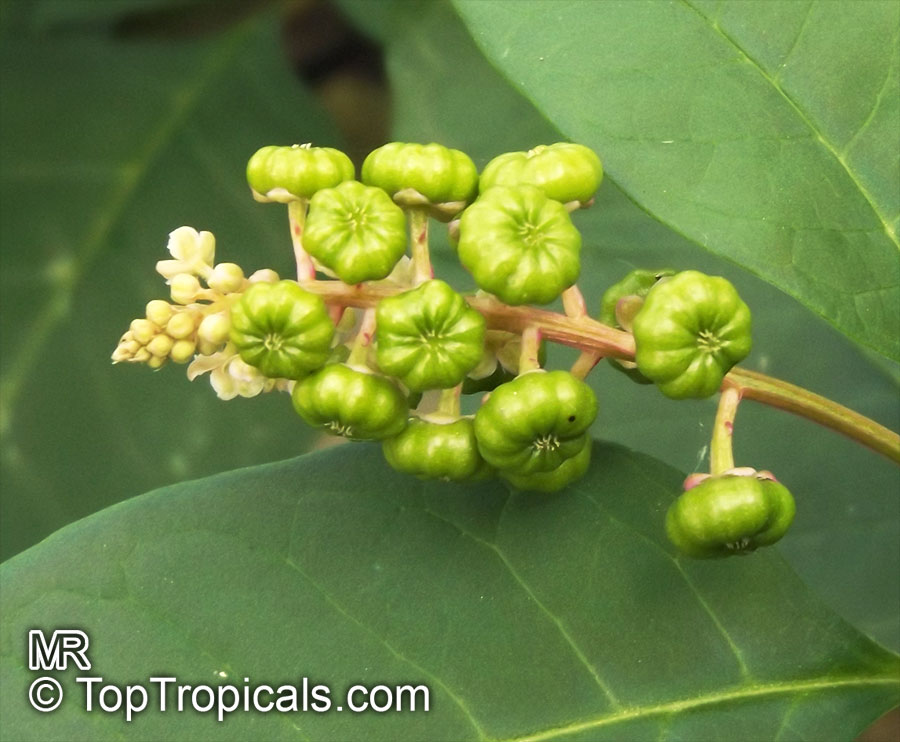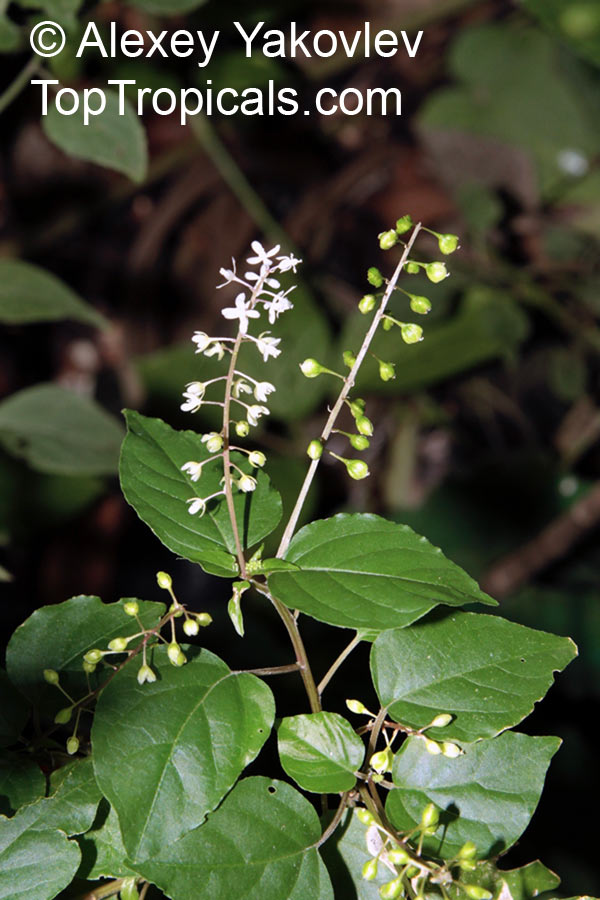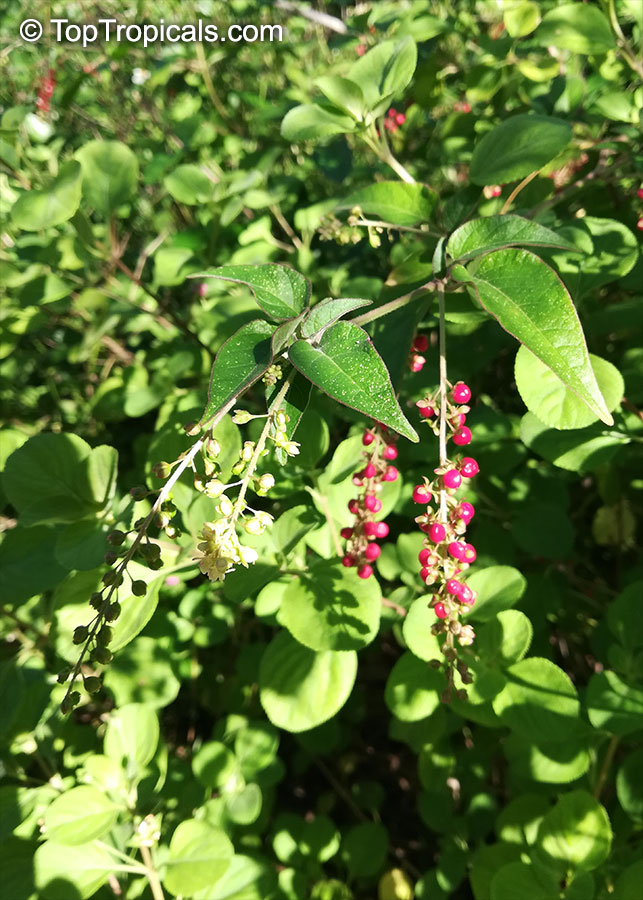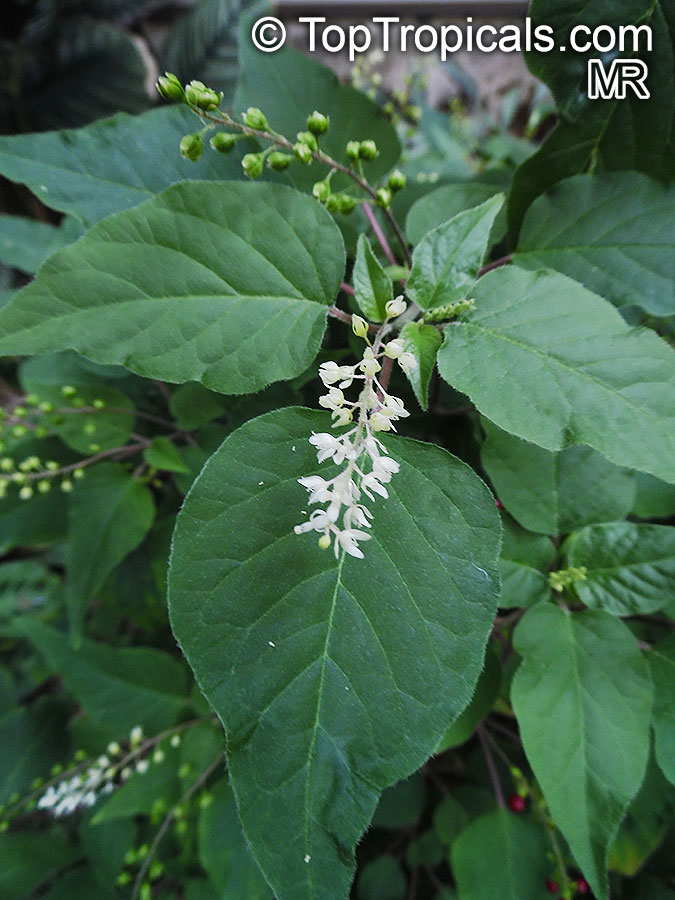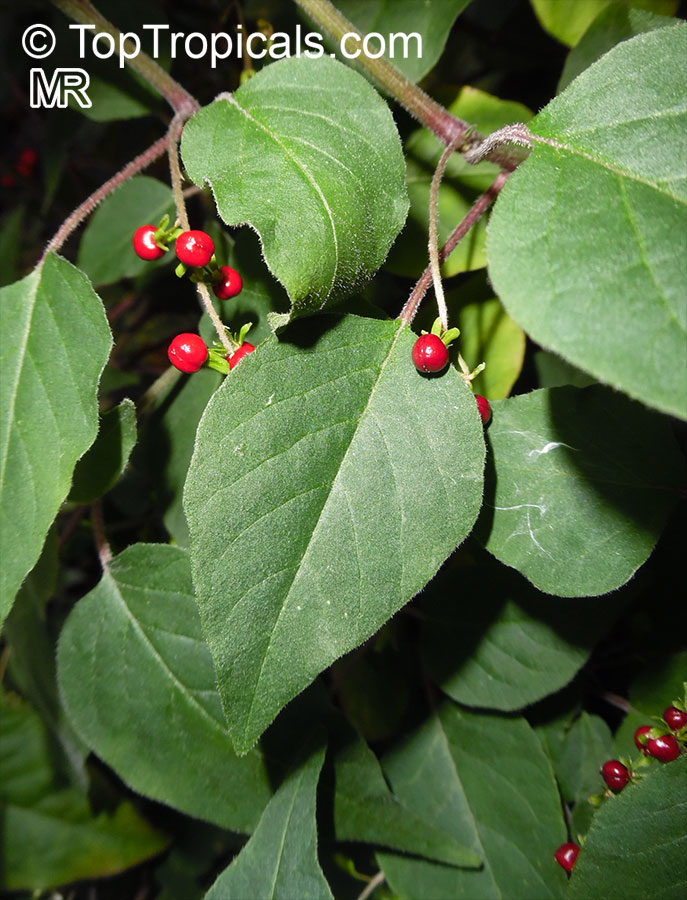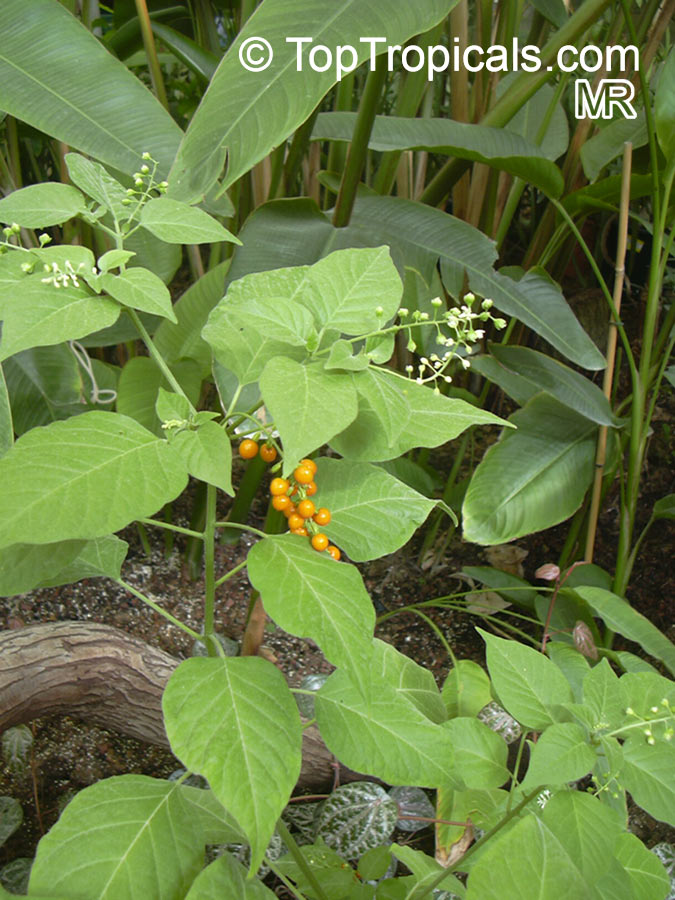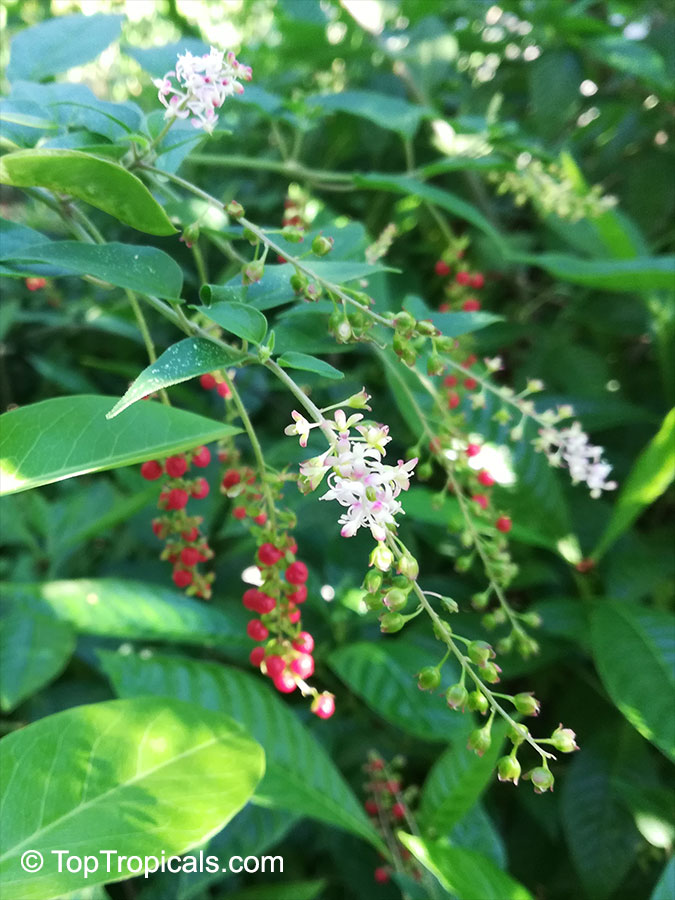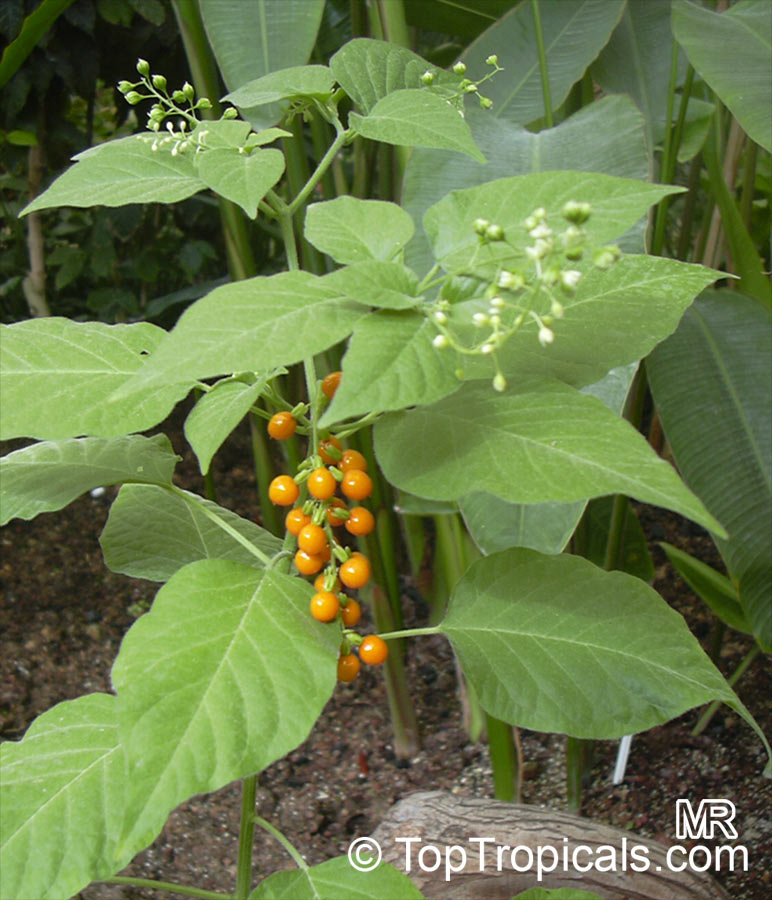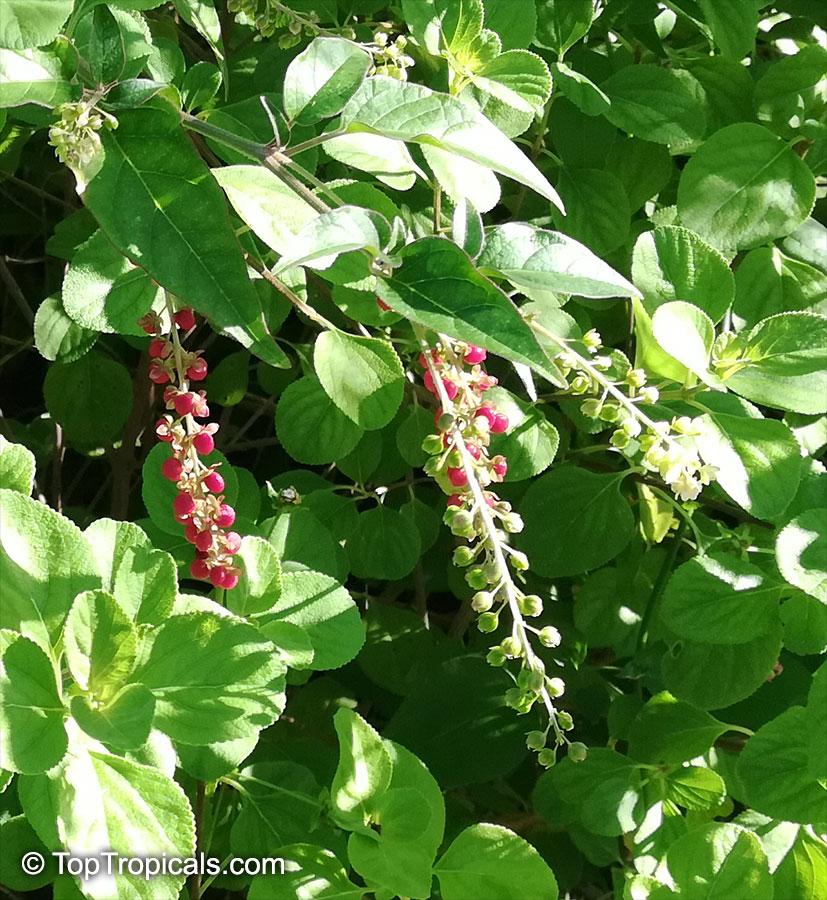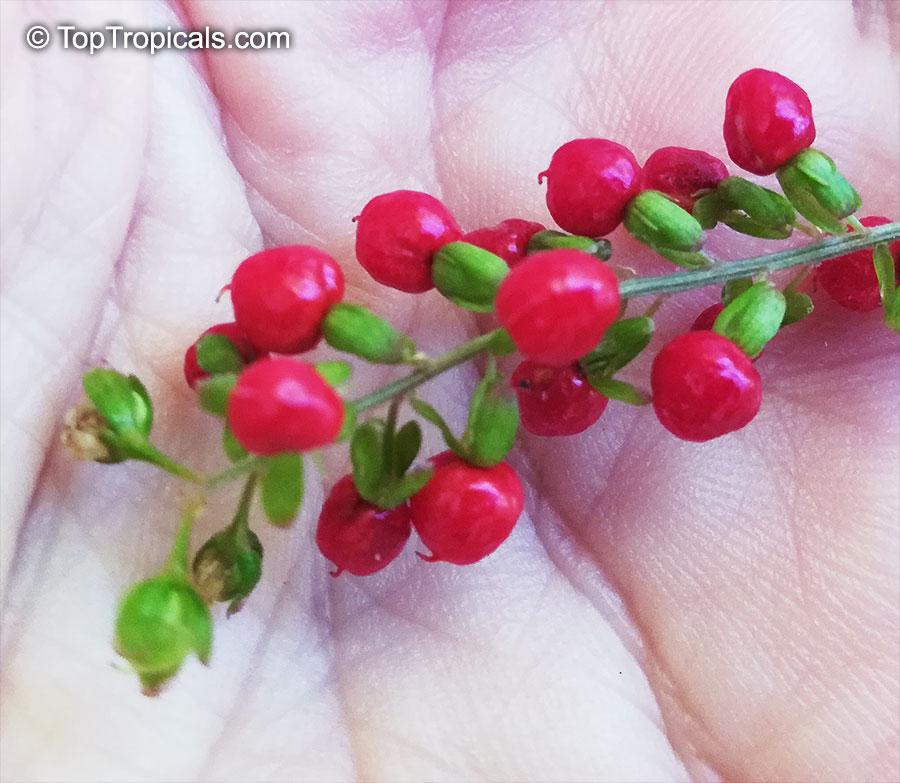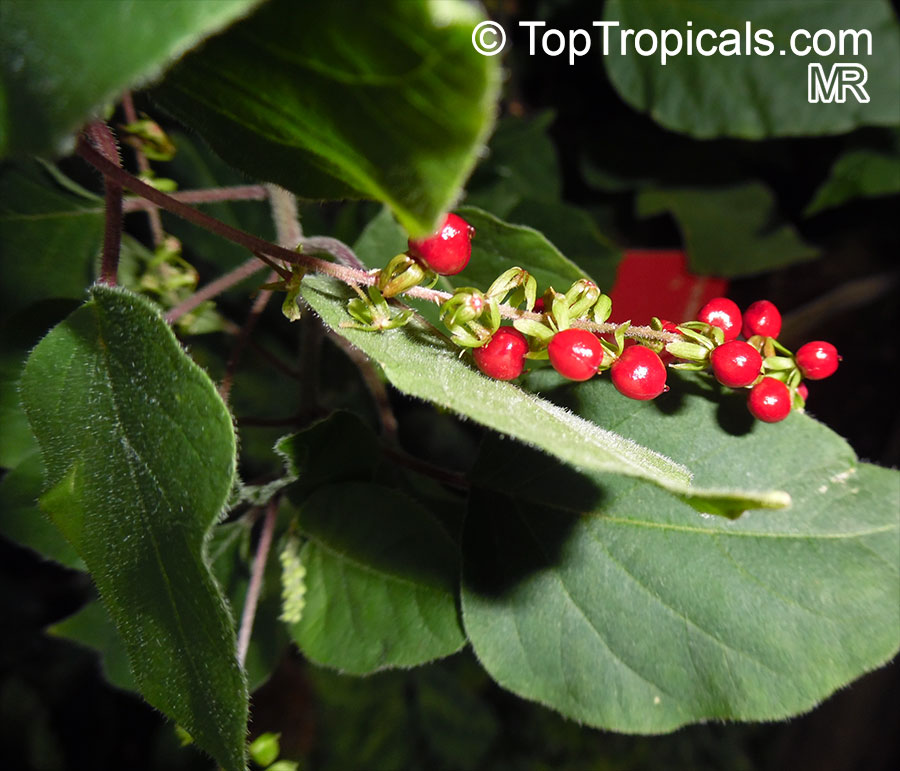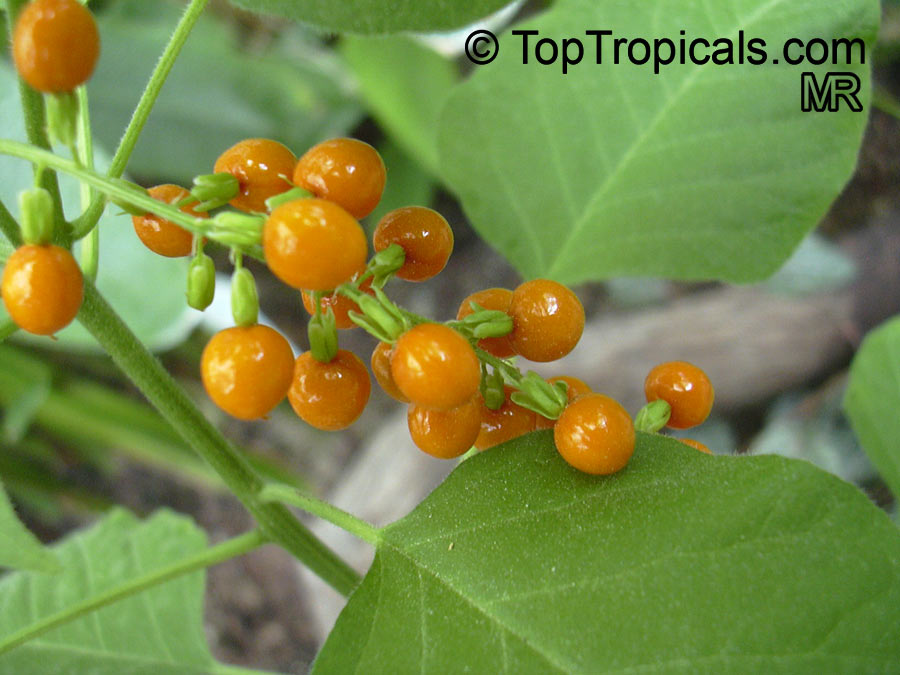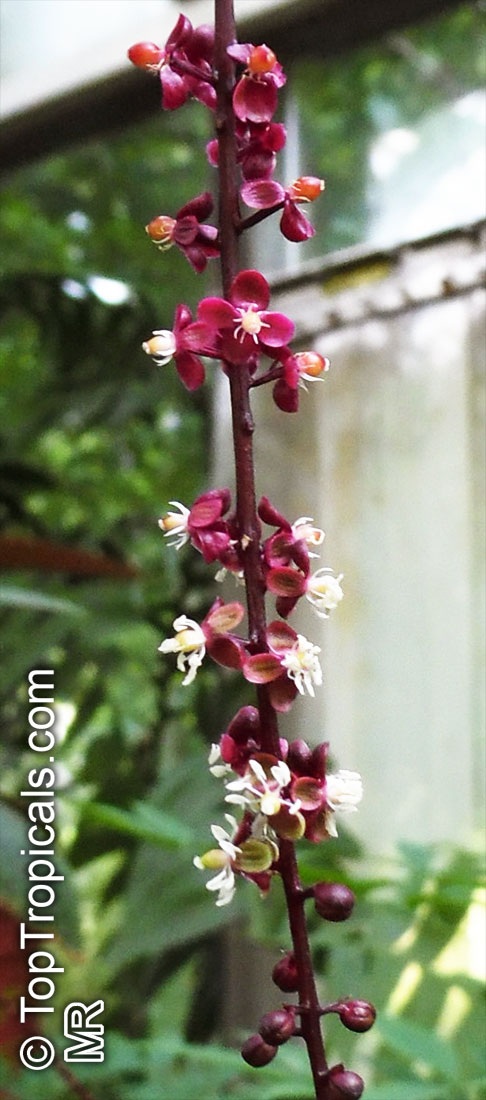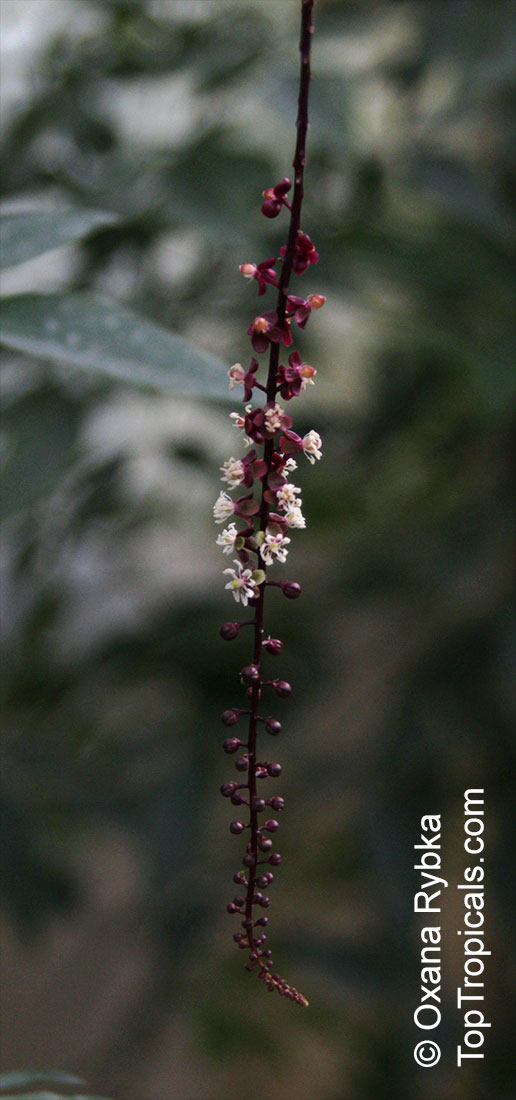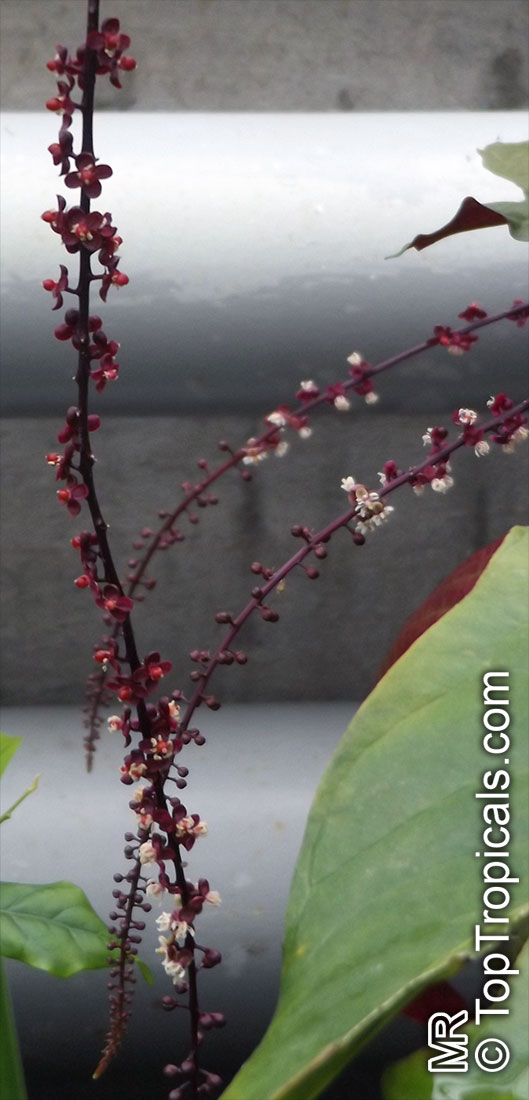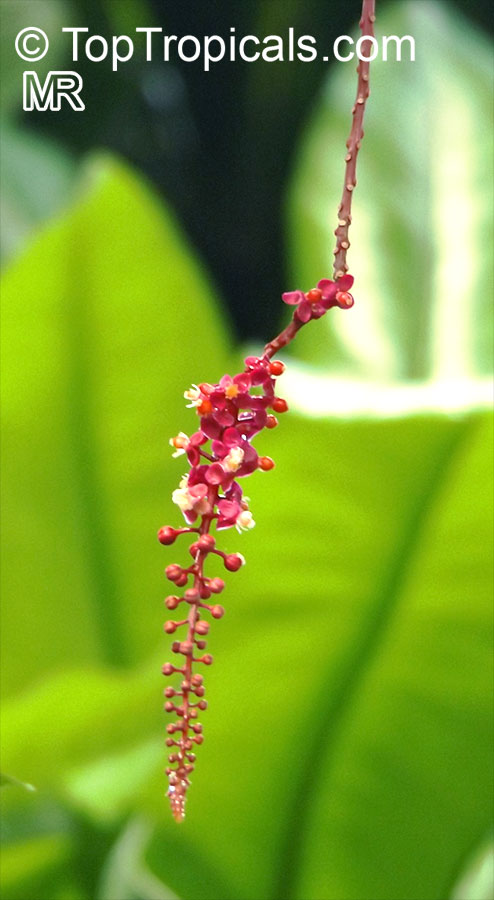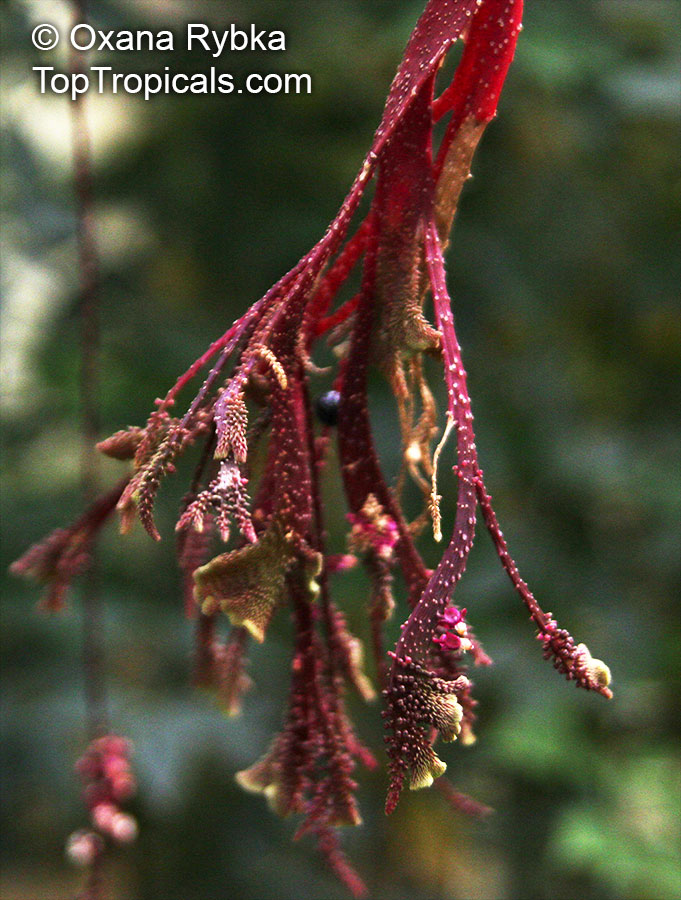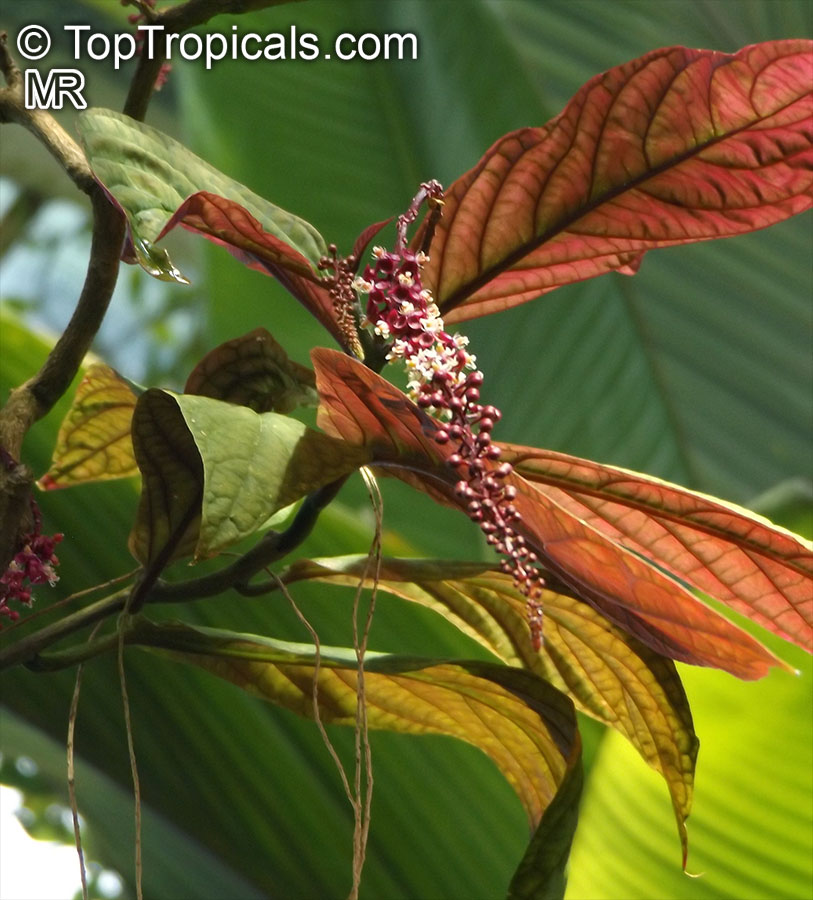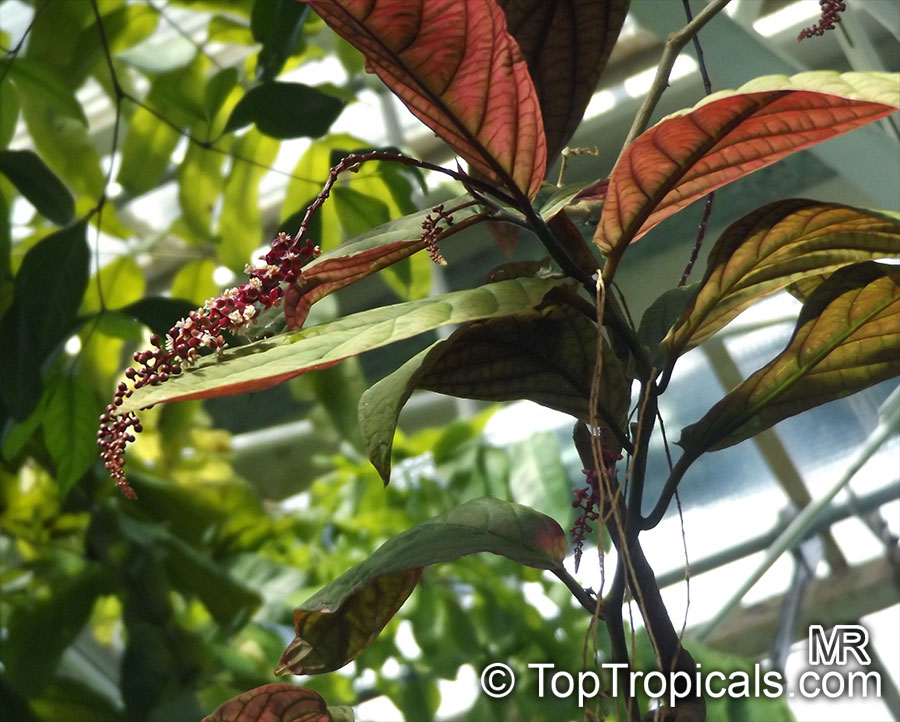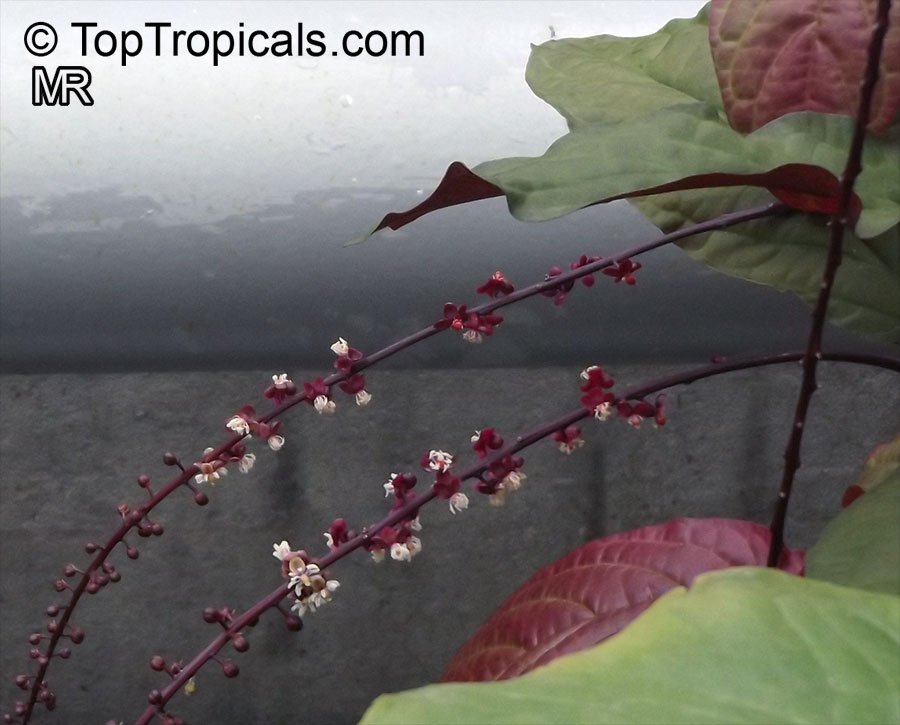Phytolaccaceae - Botanical Family
Top Tropicals Plant Encyclopedia
| Number of plants found: 6 |
Botanical name: Phytolacca americana
Common name: American Pokeweed
Family: Phytolaccaceae
Origin: Eastern North America









White flowers are followed by purple to almost black berries, which are a good food source for songbirds.
Botanical name: Phytolacca dioica
Common names: Pokeweed, Belhambra, Bella Ombre, Ombu, Umbo, Umbra tree, Elephant tree, Fitolaca, Beautiful shade
Family: Phytolaccaceae
Origin: South America







Very interesting looking, fast growing, beautiful shade tree, the Ombu can be found in Argentina, Brazil and Uruguay. It is uniquely swollen at the base, which may grow to 12 ft in diameter, spreading above the ground so that the tree appears to be standing on a mound. The trunk and branches contain up to 80 percent of water.
It is a fast-growing and long-lived evergreen tree with a domed crown. Its height can reach 40 to 60ft. It grows rapidly and is nearly indestructible. Its wood is soft and spongy, soft enough to be cut with a regular knife. The Ombu often has multiple trunks. Its sap is poisonous, therefore the bush is not browsed by cattle. It is also immune to locusts and other pests. It has greenish-white flowers that grow in long clusters. These clusters droop from the weight of the crimson, ripe berries that develop from these flowers.
The Ombu's massive, fire resistant trunks contain water storage tissue, an excellent adaptation for intense grassland fires which are common in its natural region. The trees have enlarged bases in which they store water. An easily grown plant, succeeding in most soils, though preferring a moisture retentive fertile soil in full sun or partial shade. This species tolerates temperatures down to 15F. It does not need much water considering there is only 10-30 in of rainfall a year in its natural habitat.
The tree is sometimes harvested from the wild as a source of food, medicines and other commodities. It is sometimes grown as an ornamental plant, capable of providing an excellent shade in areas where other trees will not grow.
Botanical names: Phytolacca esculenta, Phytolacca acinosa esculenta
Common name: Pokeweed
Family: Phytolaccaceae
Origin: China









An ethnomedical plant, the young shoots are boiled and used as a vegetable in the Orient. Phytolacca esculenta (Pokeweed) is a large shrub native to China, typically growing between 5-10 ft tall. It is also sometimes known as an Indian poke, pokeberry, poke root, or inkberry and grows in USDA Zone 9-11. This plant has large, oval and pointed, dark green leaves, and clusters of white and off-white flowers in spring and summer. It is often found in woodland areas, but is also a very popular garden plant.
Pokeweed is a low maintenance plant and grows best in full sun or in semi-shaded areas. It prefers a moisture retentive soil, requiring regular watering and moderate watering during the summer months. This plant is not frost-tolerant, so it is important to provide protection during colder months if grown in a pot, or in cold regions.
This plant is also known for its ethnomedical properties as the young shoots are boiled and eaten as a vegetable in the Orient. It is important to note that the leaves should only be cooked and eaten while they are young, as they become toxic with age. The plant itself is also poisonous or toxic, so it is important to be mindful of this when caring for it.
Botanical name: Phytolacca sp.
Common name: Pokeweed
Family: Phytolaccaceae









White flowers are followed by purple to almost black berries, which are a good food source for songbirds.
Botanical name: Rivina humilis
Common names: Bloodberry, Rouge Plant, Baby Pepper,Pigeonberry, Coralito, Inkberry, Small Pokeweed
Family: Phytolaccaceae
Origin: Southern US and Tropical America







Herbaceous plant to 4 feet, sometimes woody at base; leaves ovate to oblong, thin to 4 inches long, petioles slender; racemes slender, loose, to 8 inches long. Flowers greenish to rosy; fruit bright red, 3/16 inch in diameter. It is unique in that it is covered with small white and pink flowers, orange and red berries, and red and green foliage at the same time. The berries are much loved by birds providing them with winter food, and it is also attractive to bees, and butterflies. Propagation: Take stem cuttings in spring. Sow seeds.
Botanical name: Trichostigma peruvianum
Common name: Trichostigma
Family: Petiveriaceae (Formerly:Phytolaccaceae)
Origin: Ecuador, Colombia, Peru






Native to Ecuador, Colombia, and Peru, this impressive large shrub can grow to a height of 5-10 feet tall and 3-6 feet wide, making it an excellent choice for screening and hedging in humid and subtropical climates; it makes an eye-catching container specimen, too.
The Trichostigma peruvianum requires semi-shade and regular watering, but it can also tolerate drought and extreme heat once established, which is why it has become a popular plant for gardeners in USDA Zones 9-11. Its glossy green foliage has a unique velvety texture, and its habit is graceful, with arching stems that create an elegant and lush look. When in bloom, the plant's intriguing racemes of white, off-white, red, crimson, and vinous flowers make a beautiful display of color. In addition to its ornamental value, Trichostigma peruvianum has several ethnomedical uses, ranging from curing stomach ailments to providing relief from neuralgia.
When it comes to growing Trichostigma peruvianum, the right spot is one of the most important elements. It should be planted in a semi-shaded area with well-draining, loamy soil and mulched to help retain moisture. If grown in containers, the soil should be rich and generous and watered regularly while giving extra attention to exposed pots in colder regions. Trilocular capsules will appear once the flowers start to fade and can be harvested to propagate new plants.
Use link to repeat this search:
https://toptropicals.com/cgi-bin/garden_catalog/cat.cgi?search_op=and&keyword_op=and&language=e&family=Phytolaccaceae
&number=10&no_change_lang=1&user=tt&sale=1&first=0
